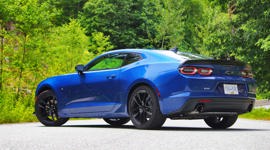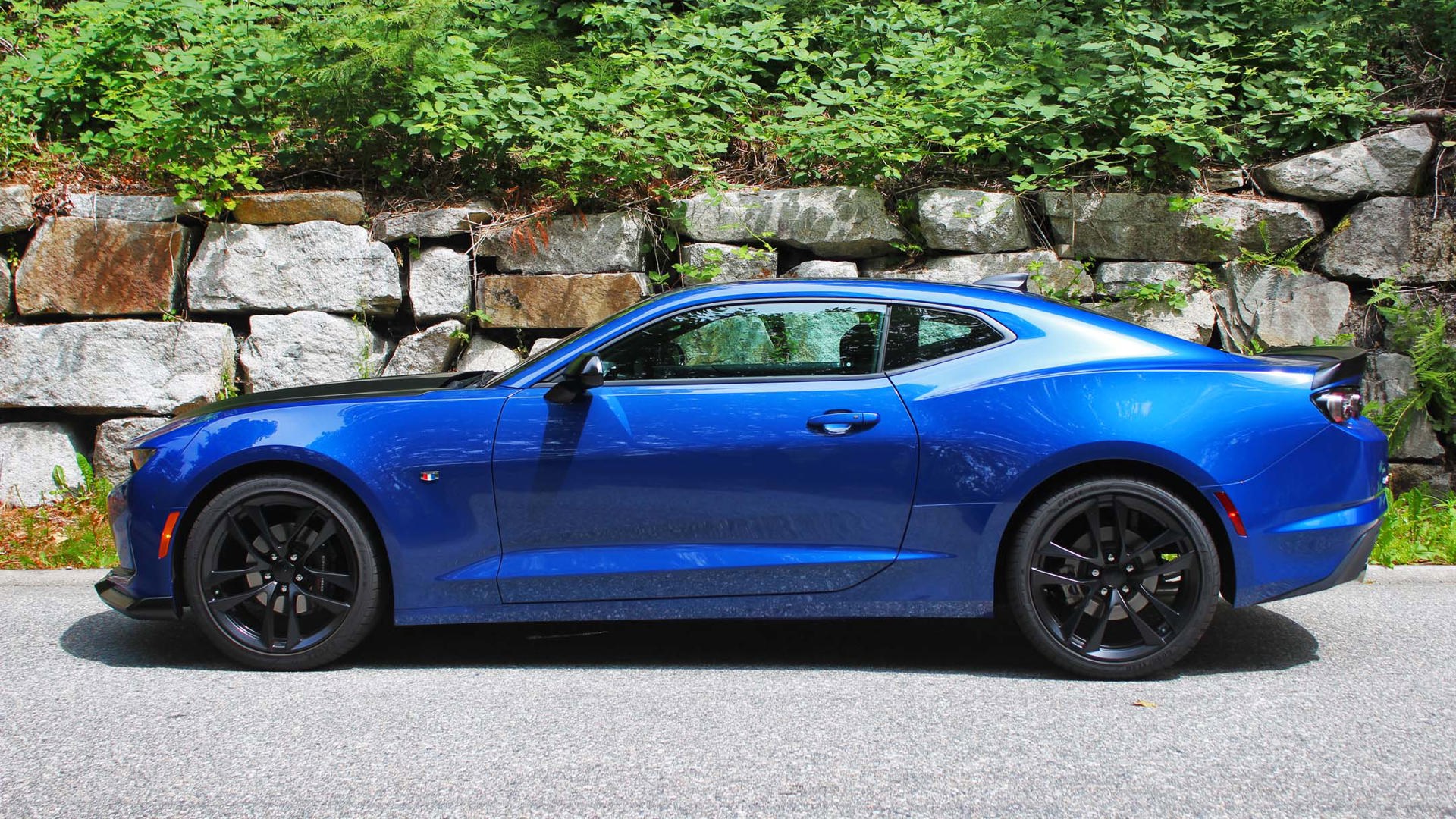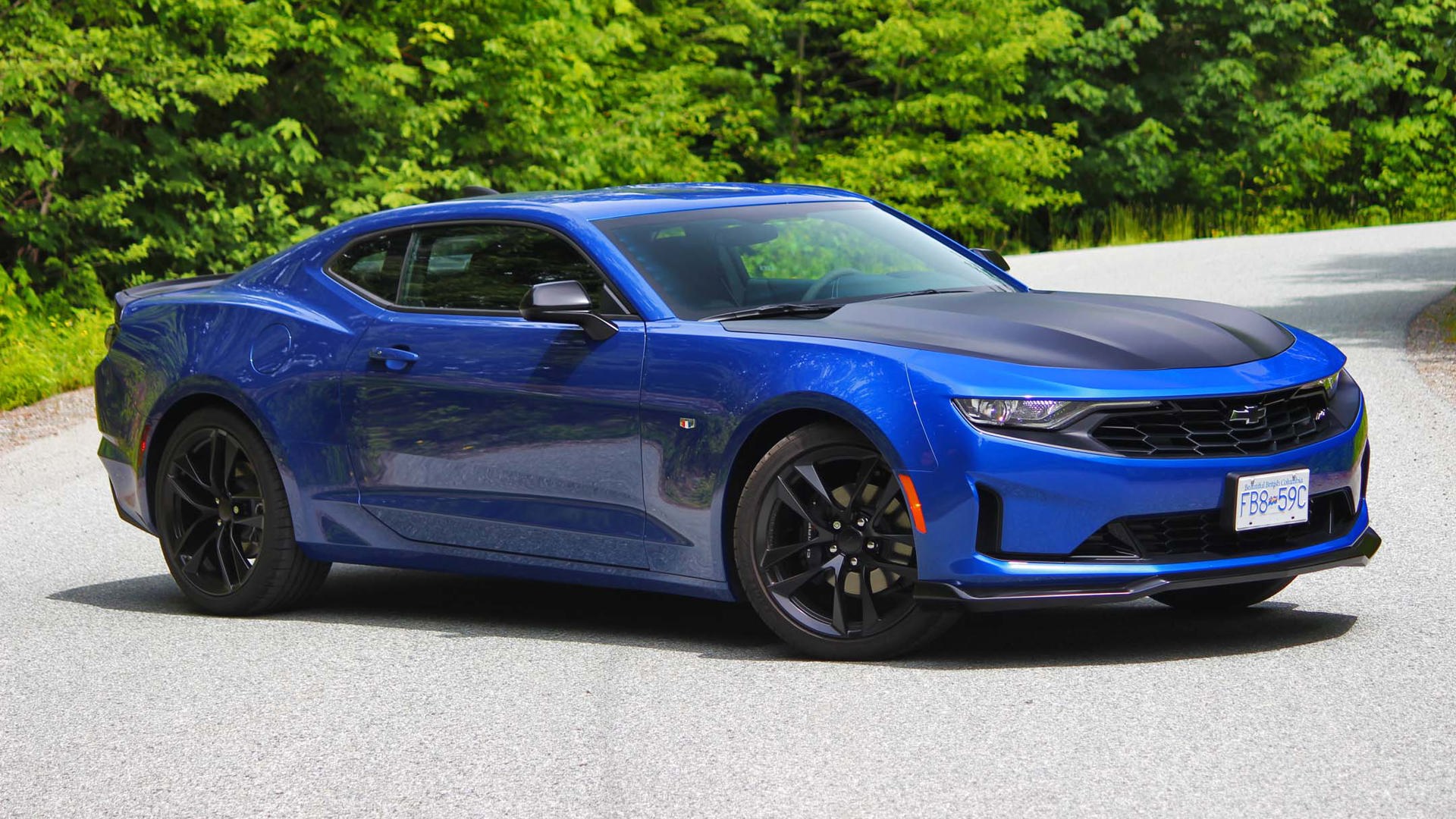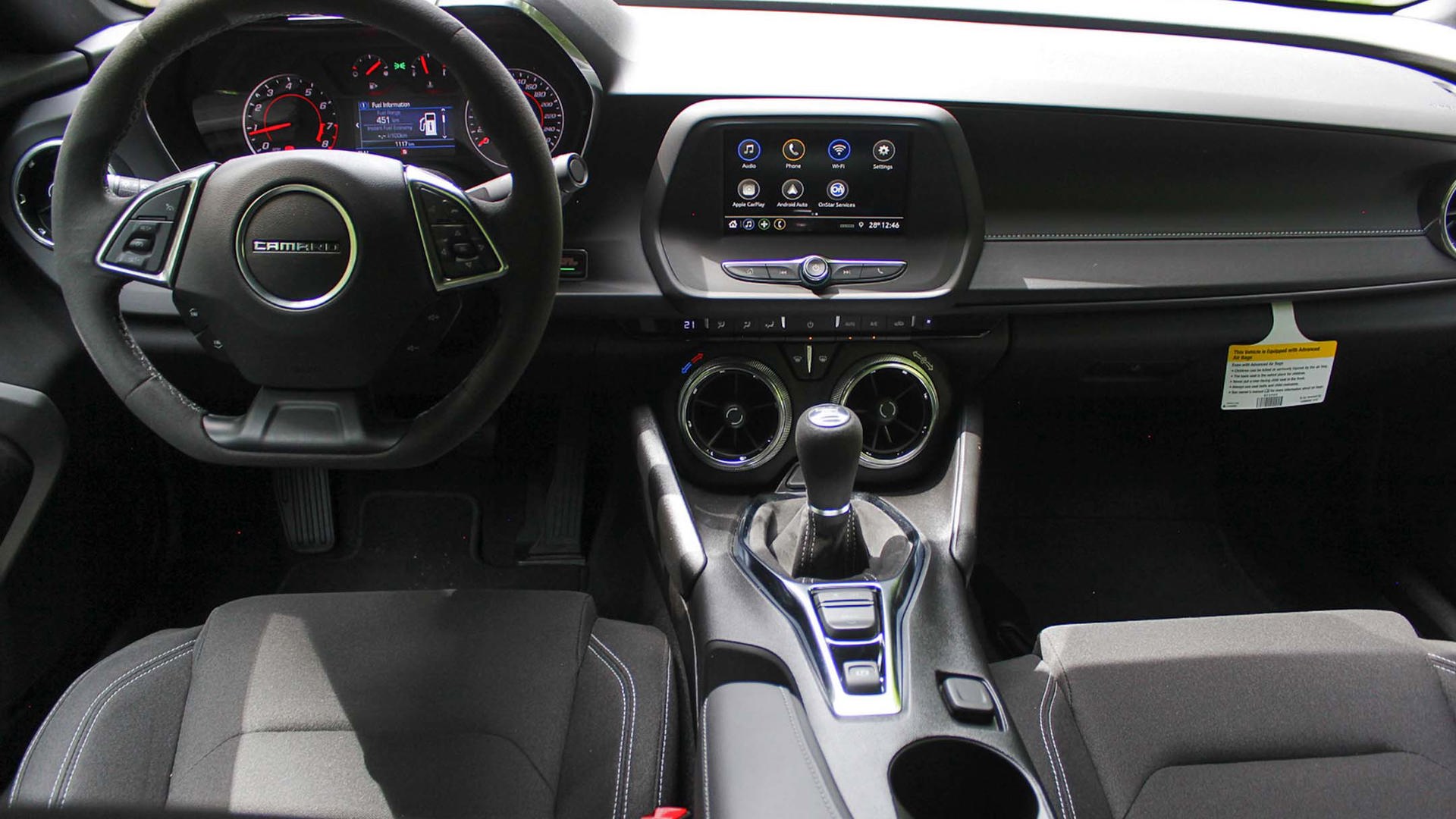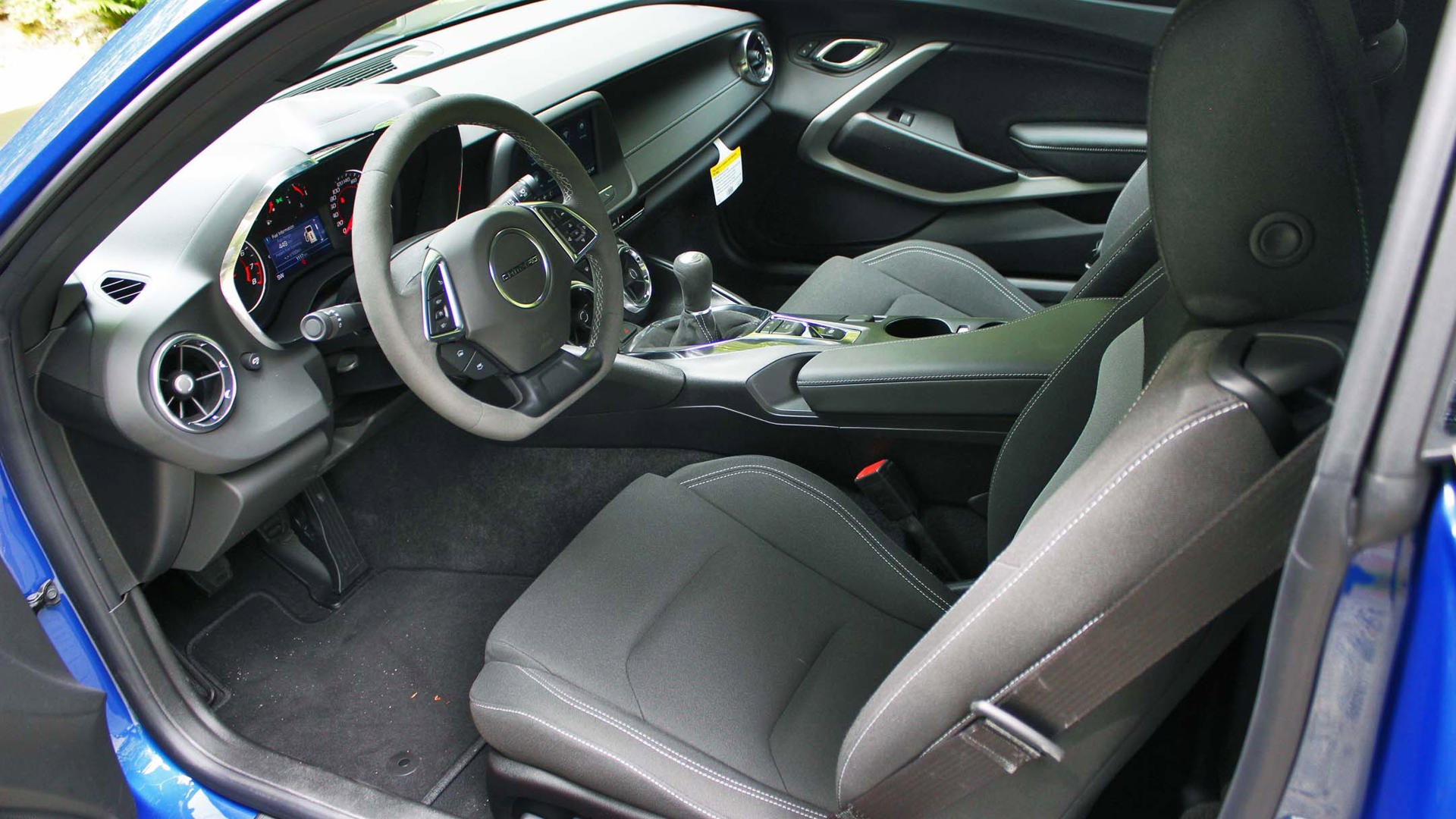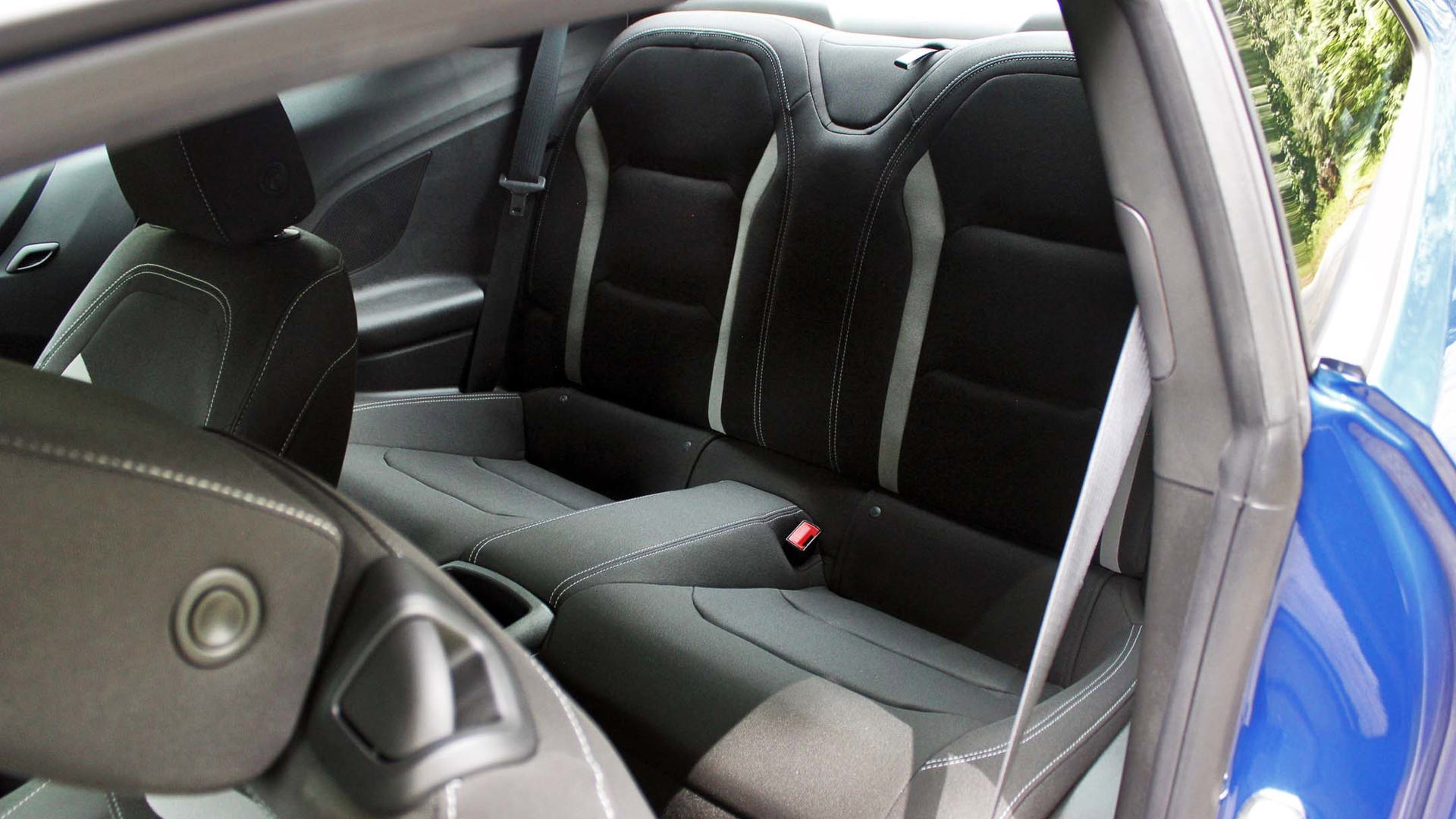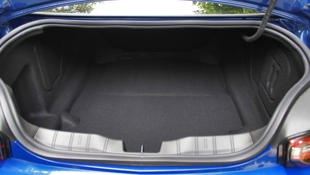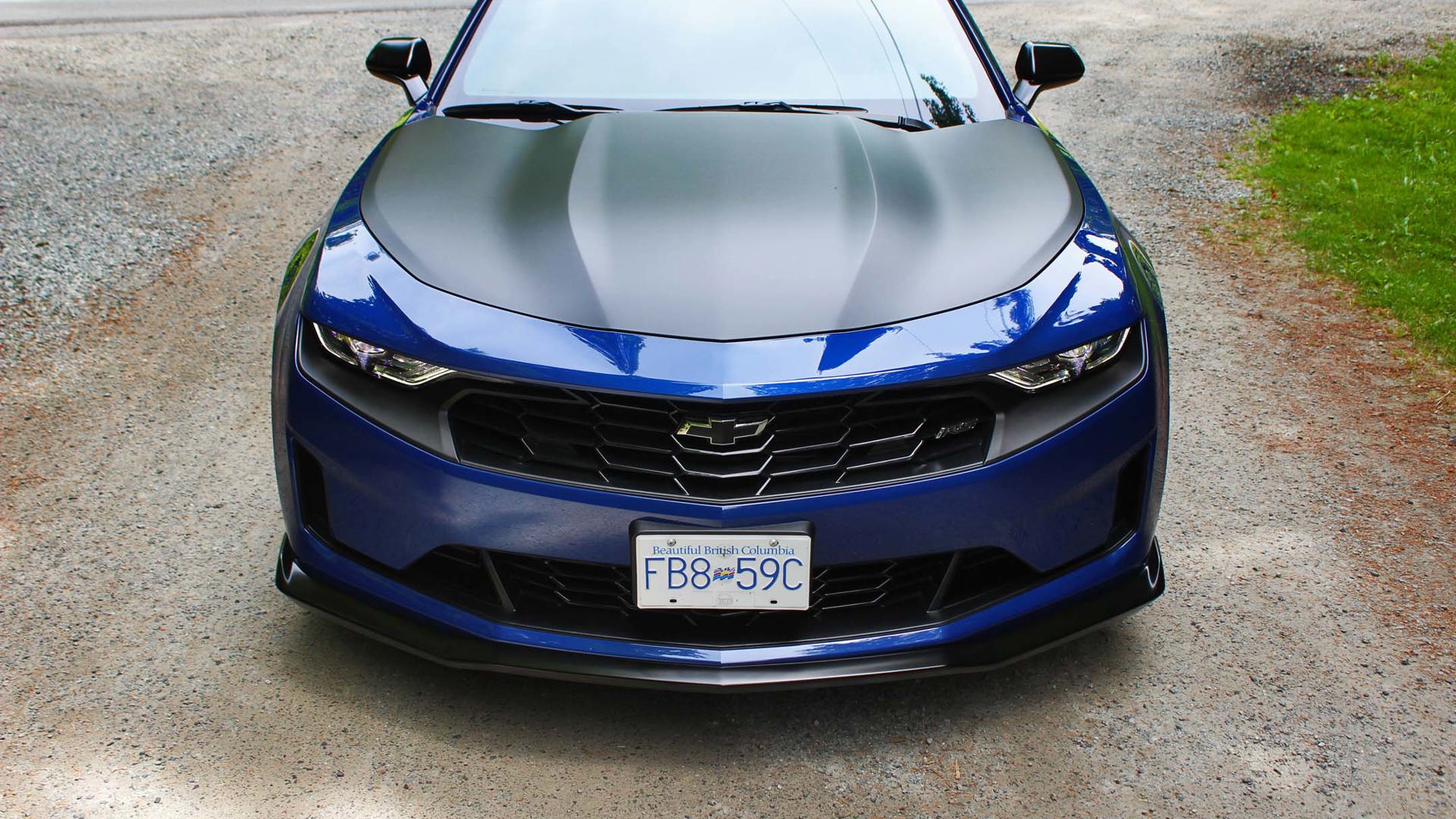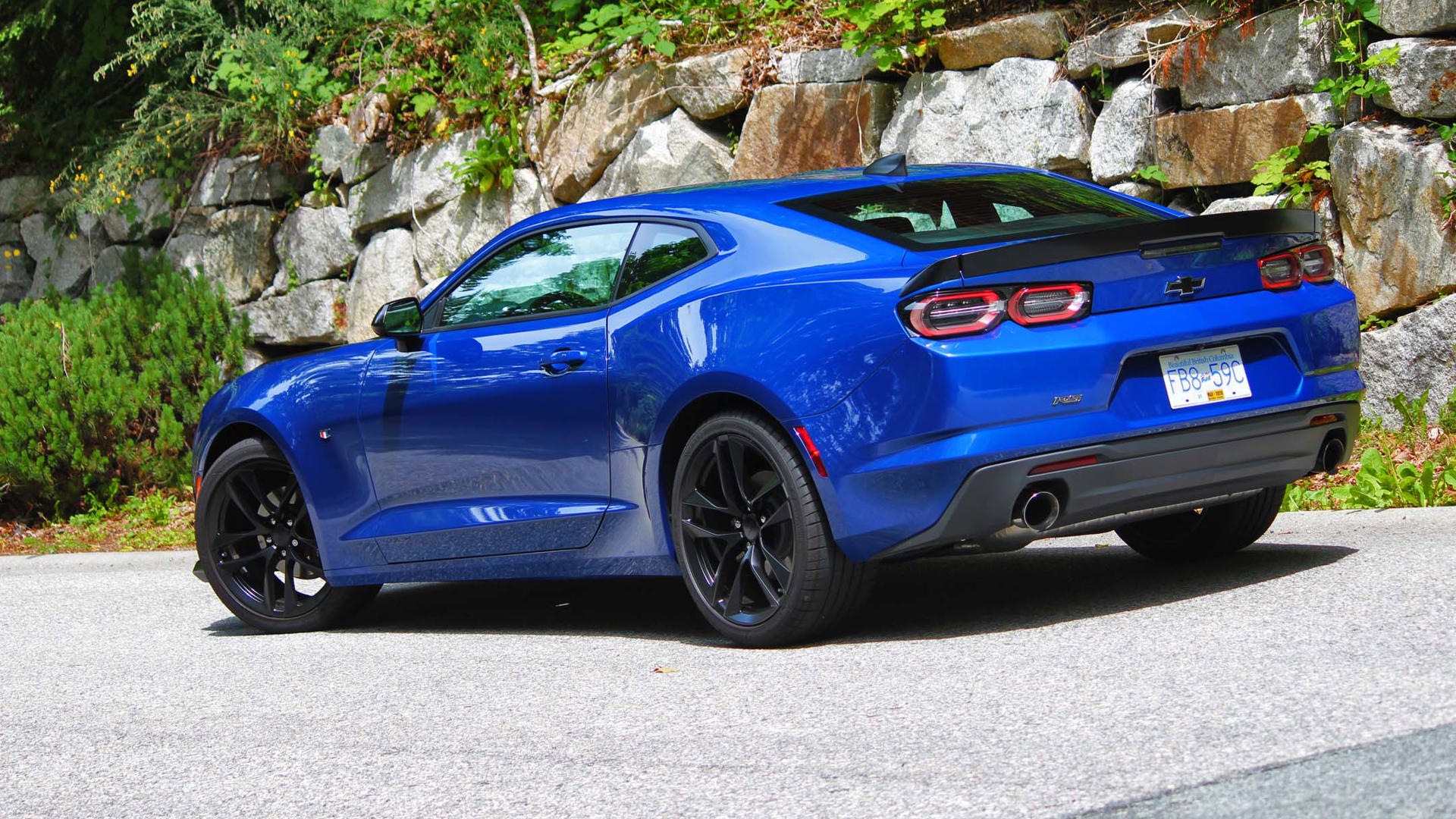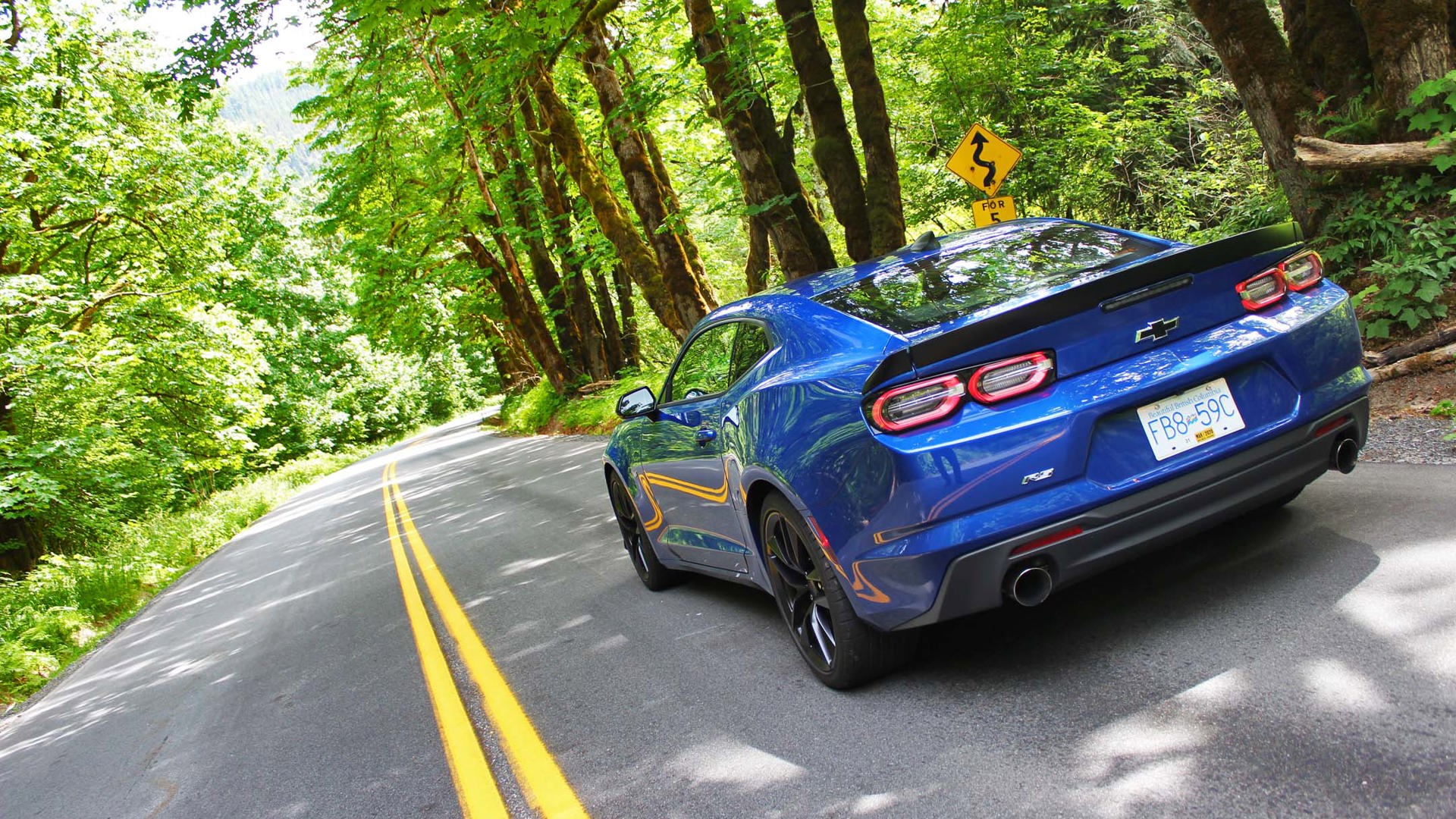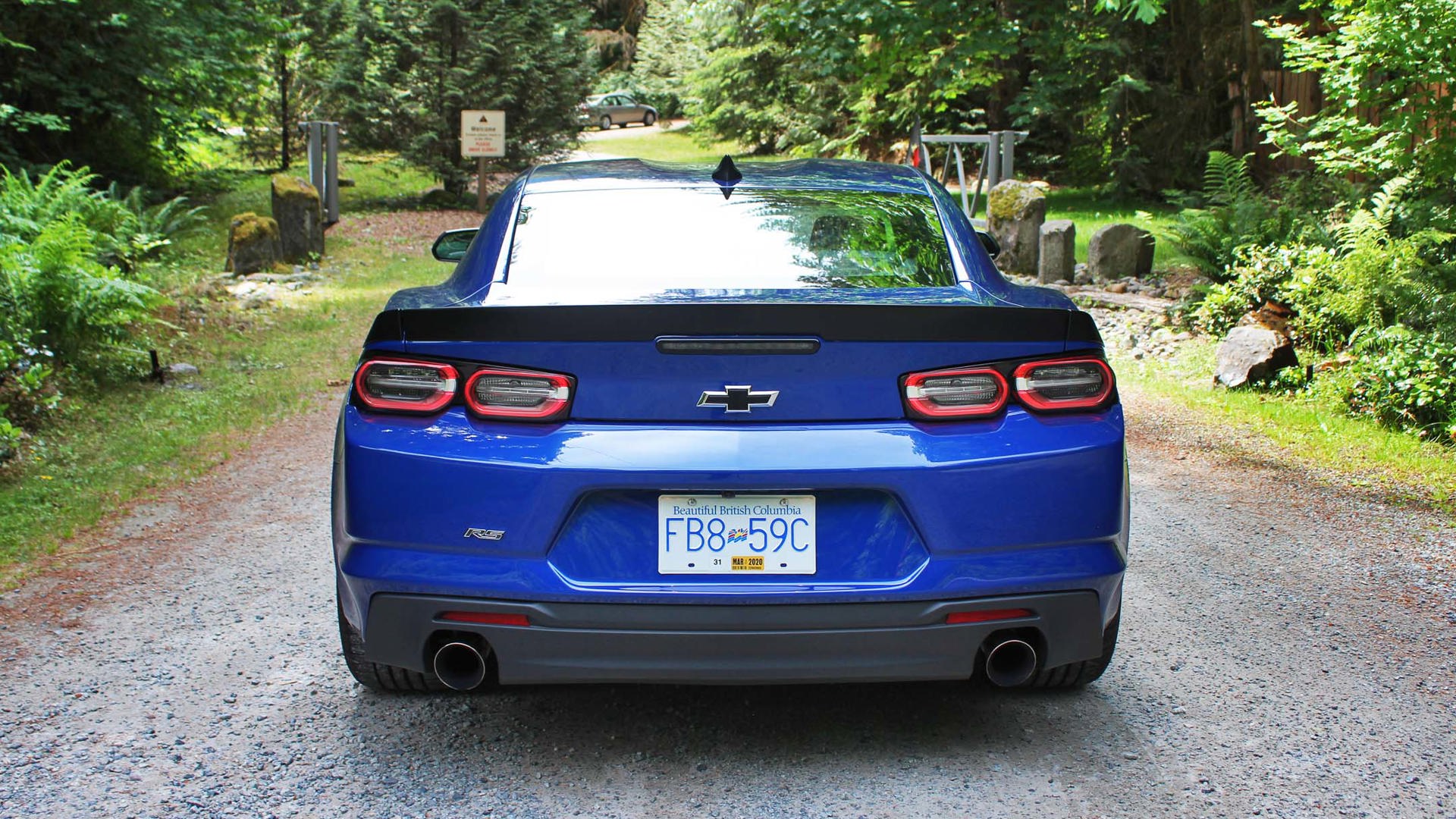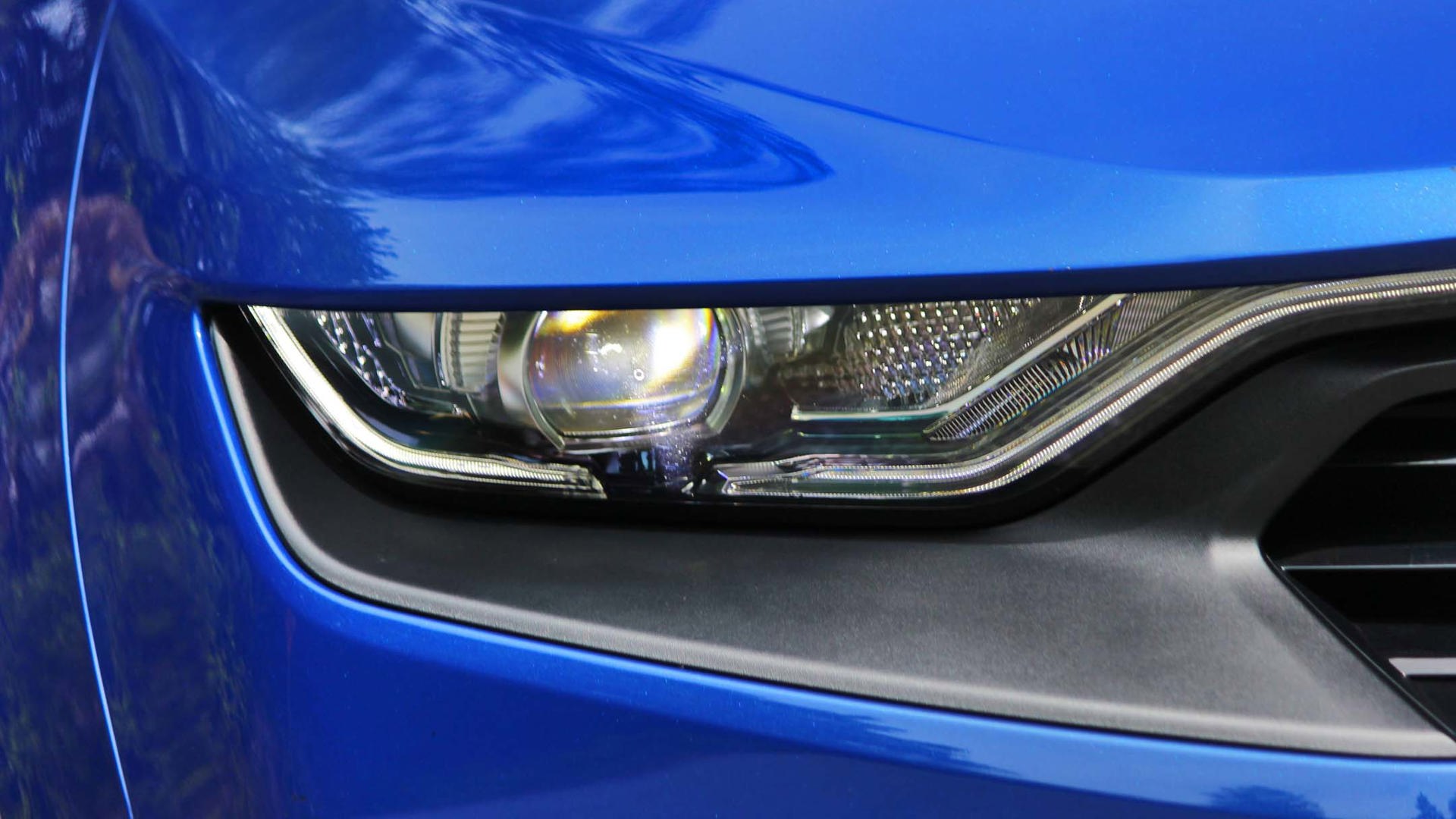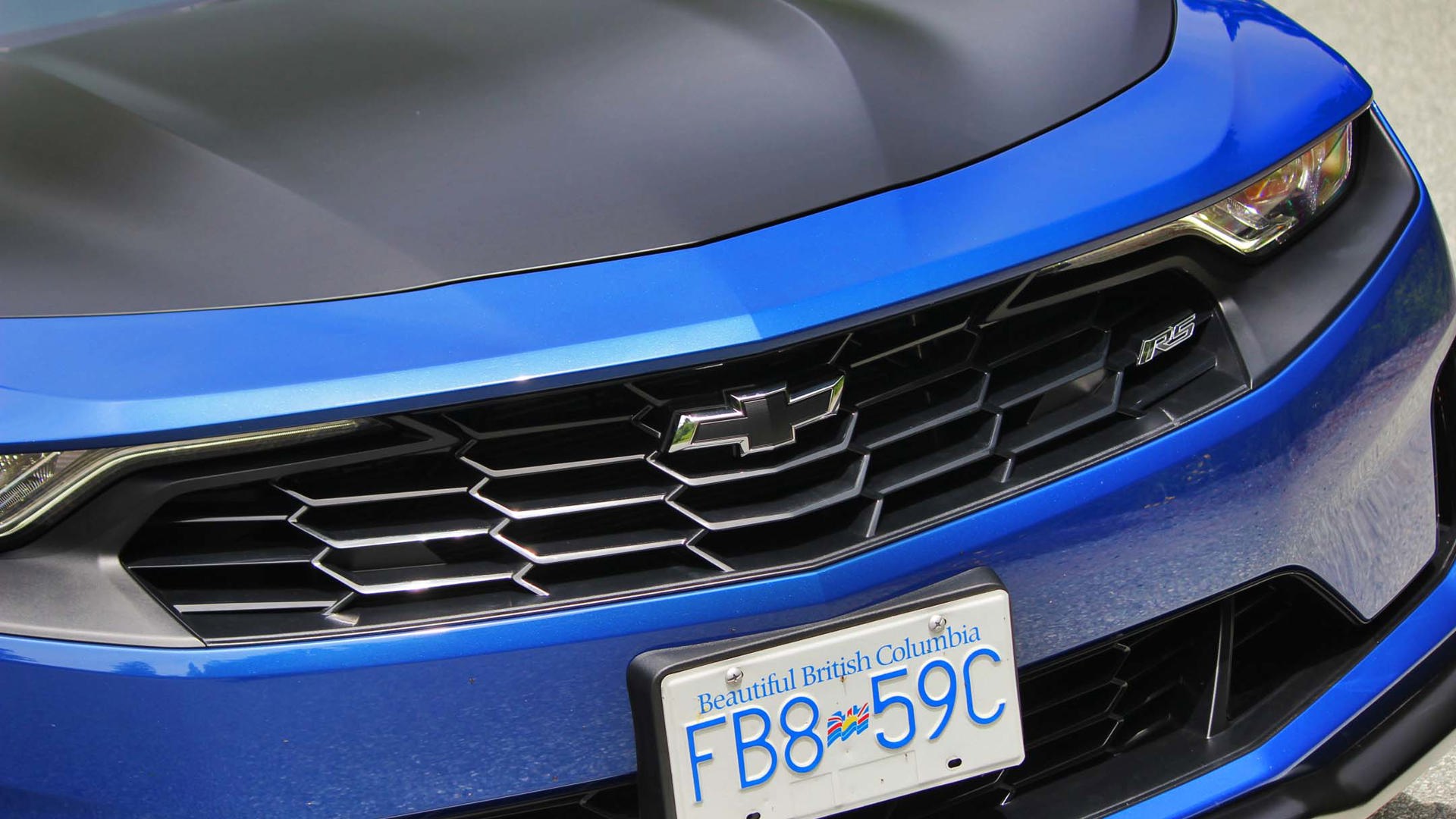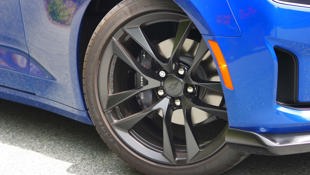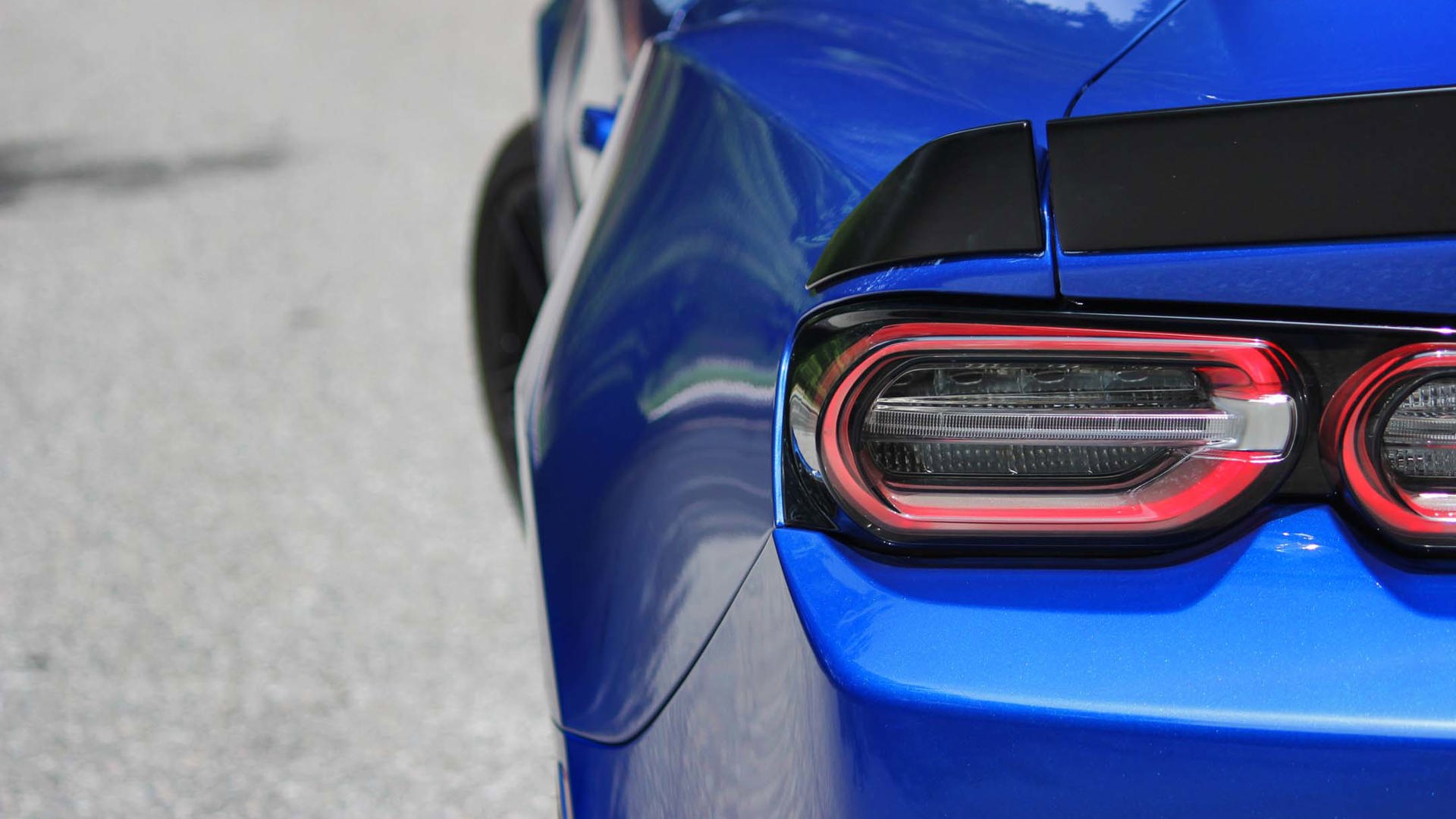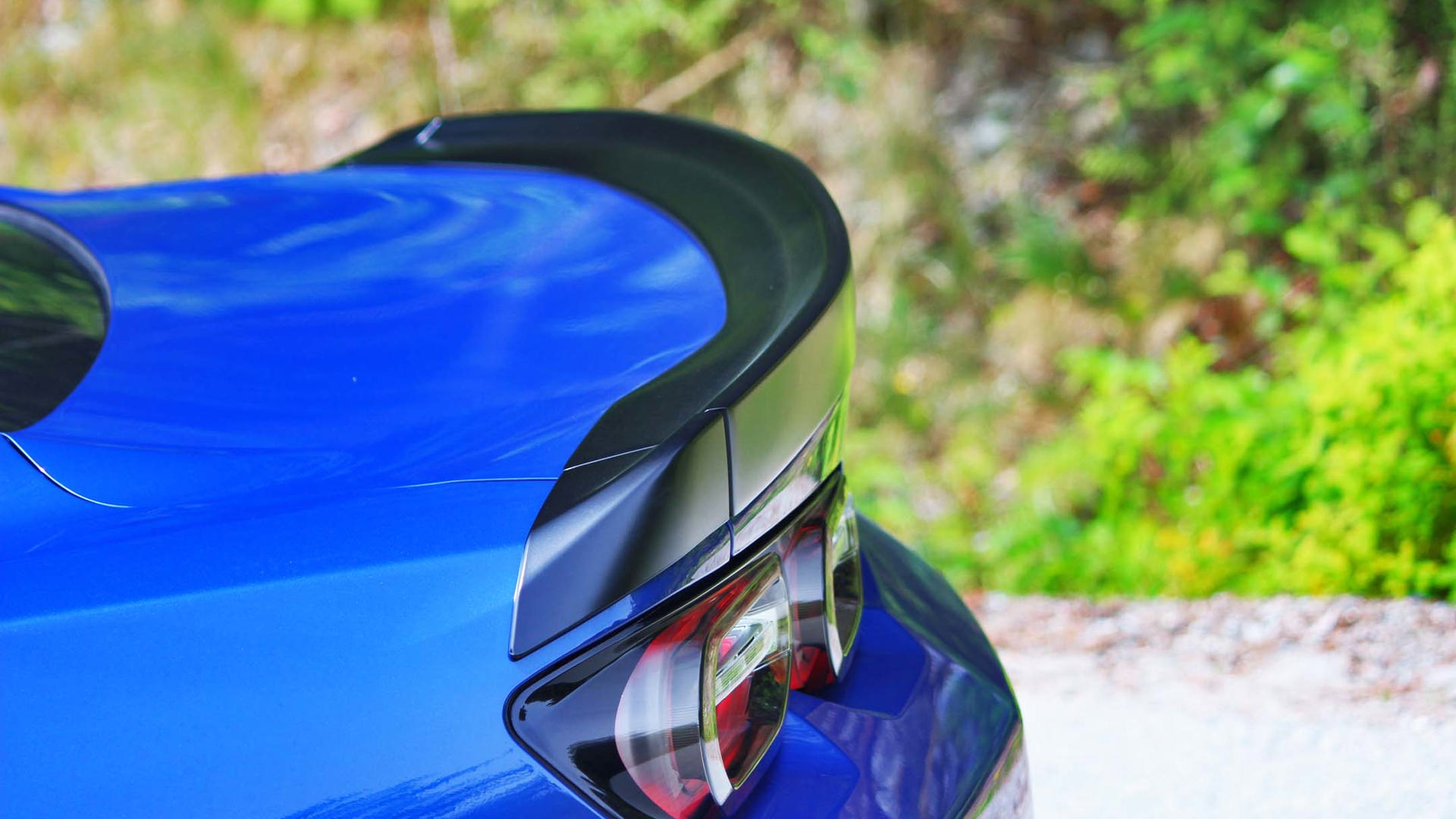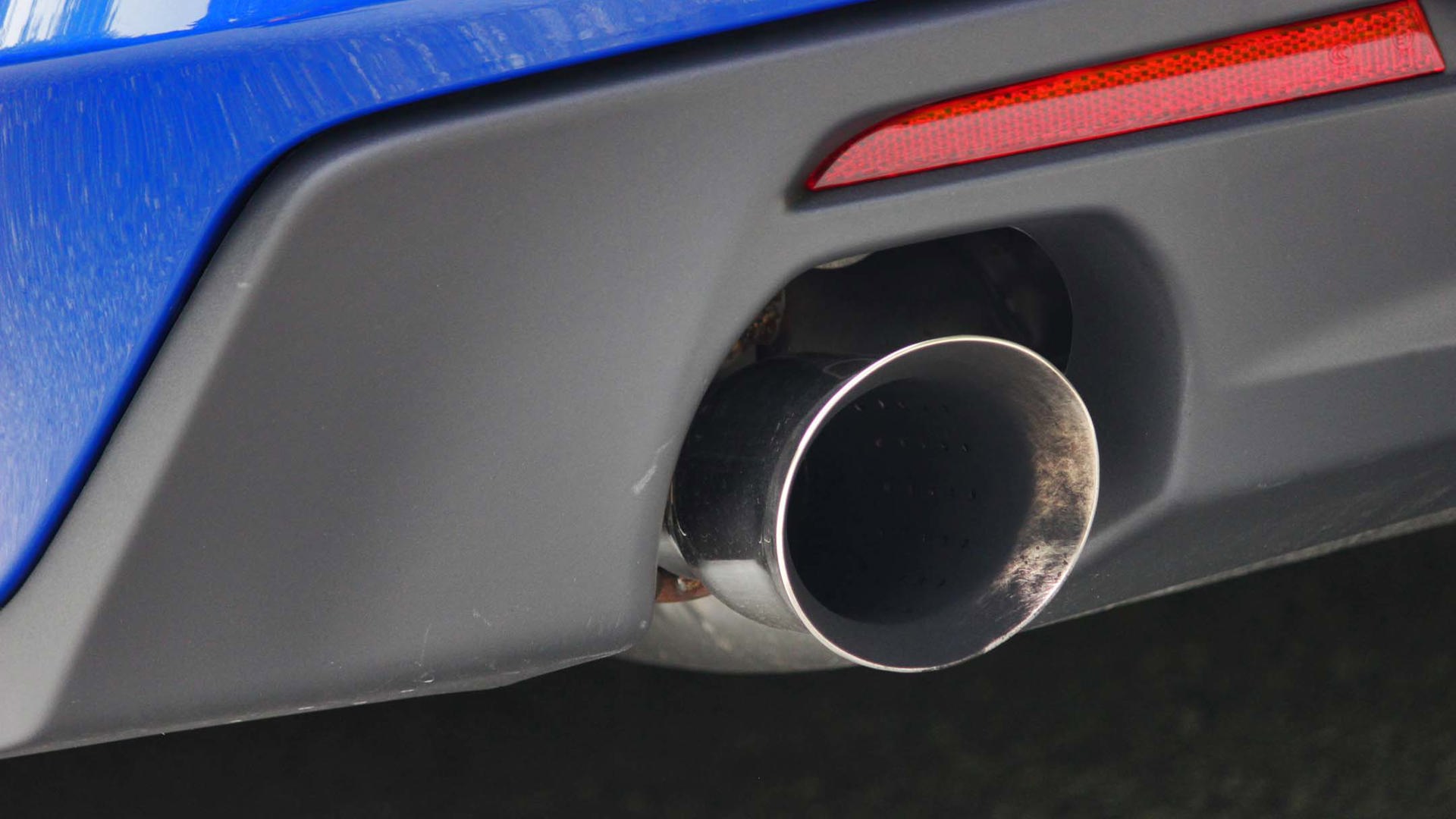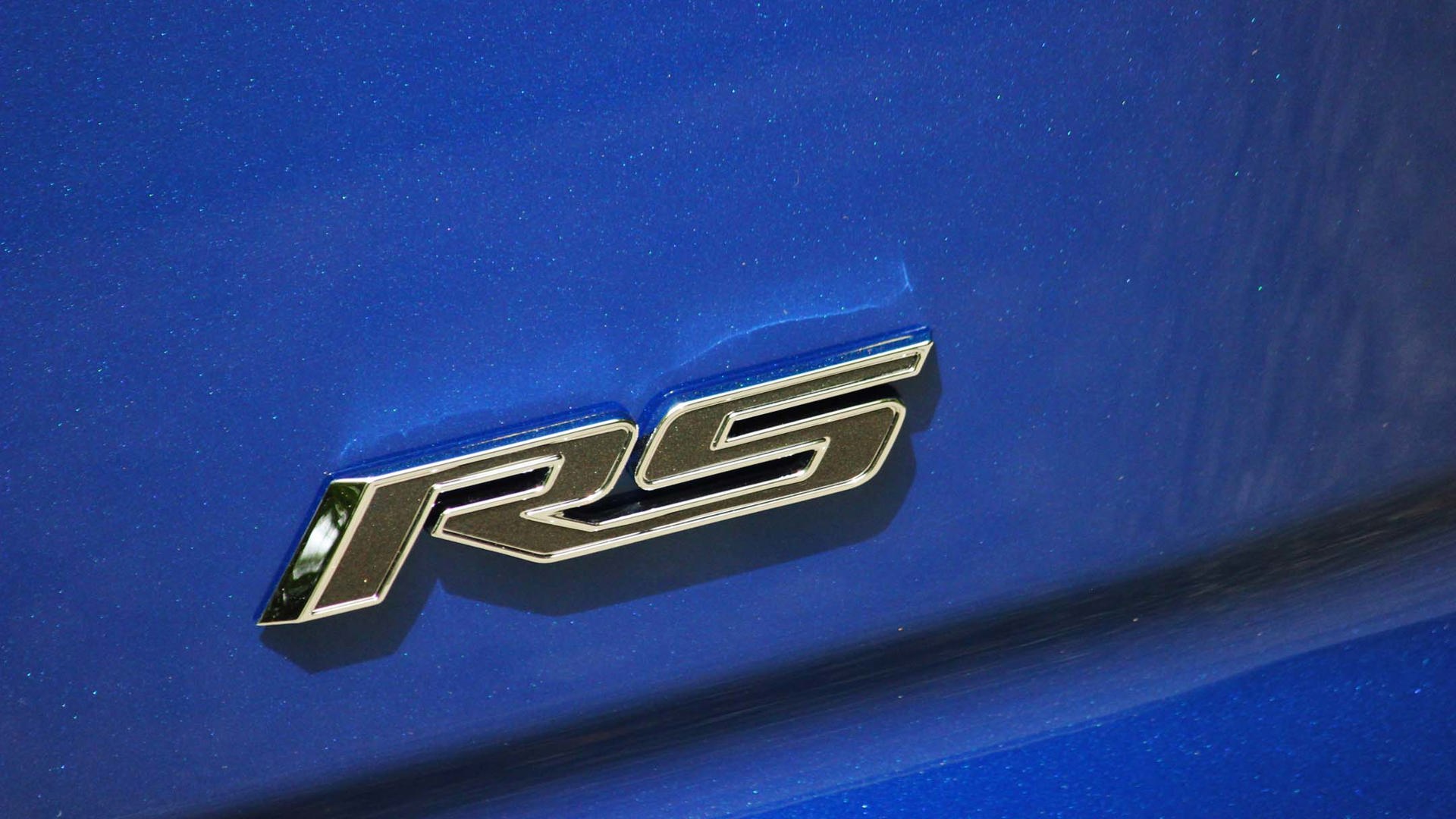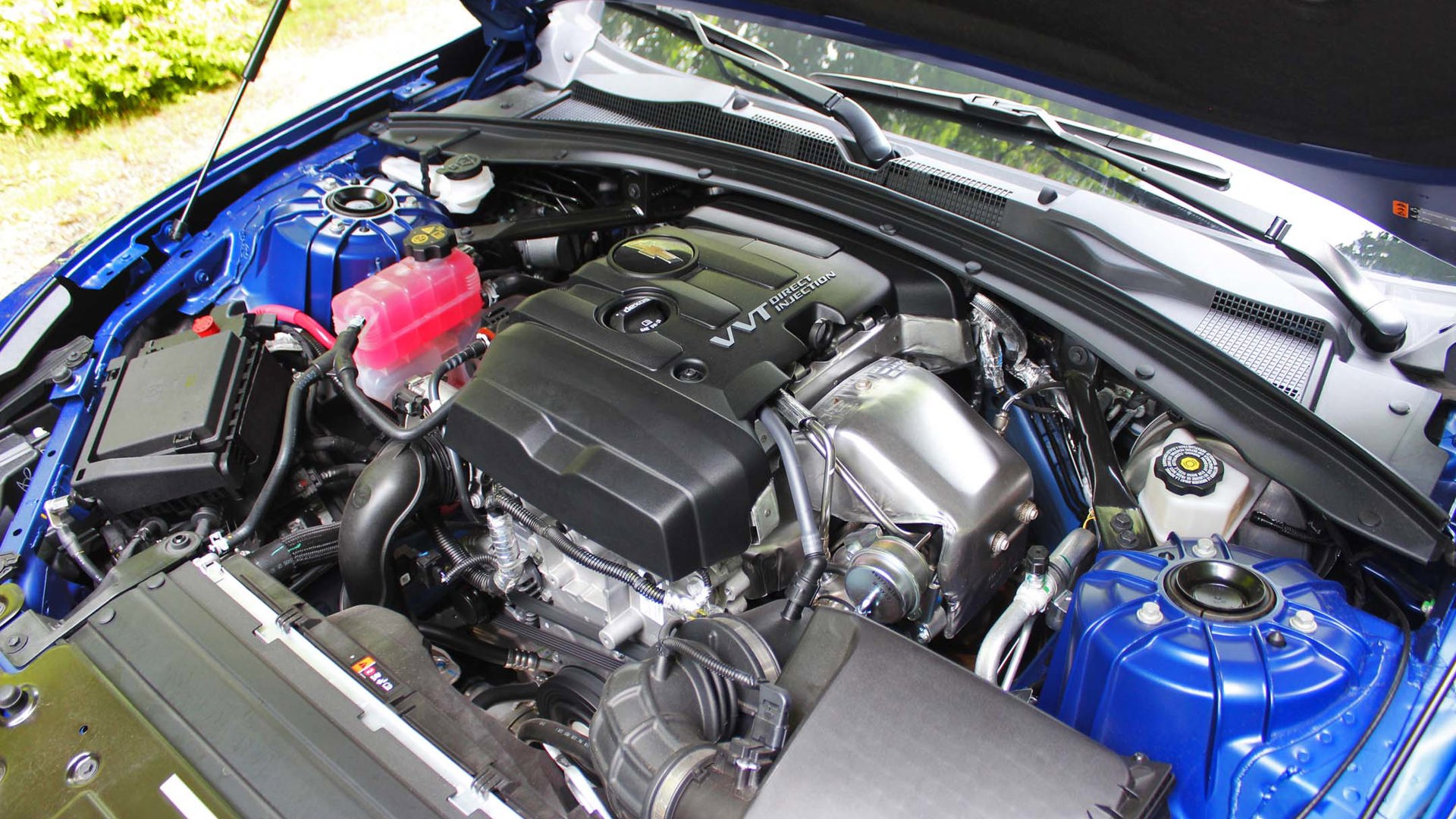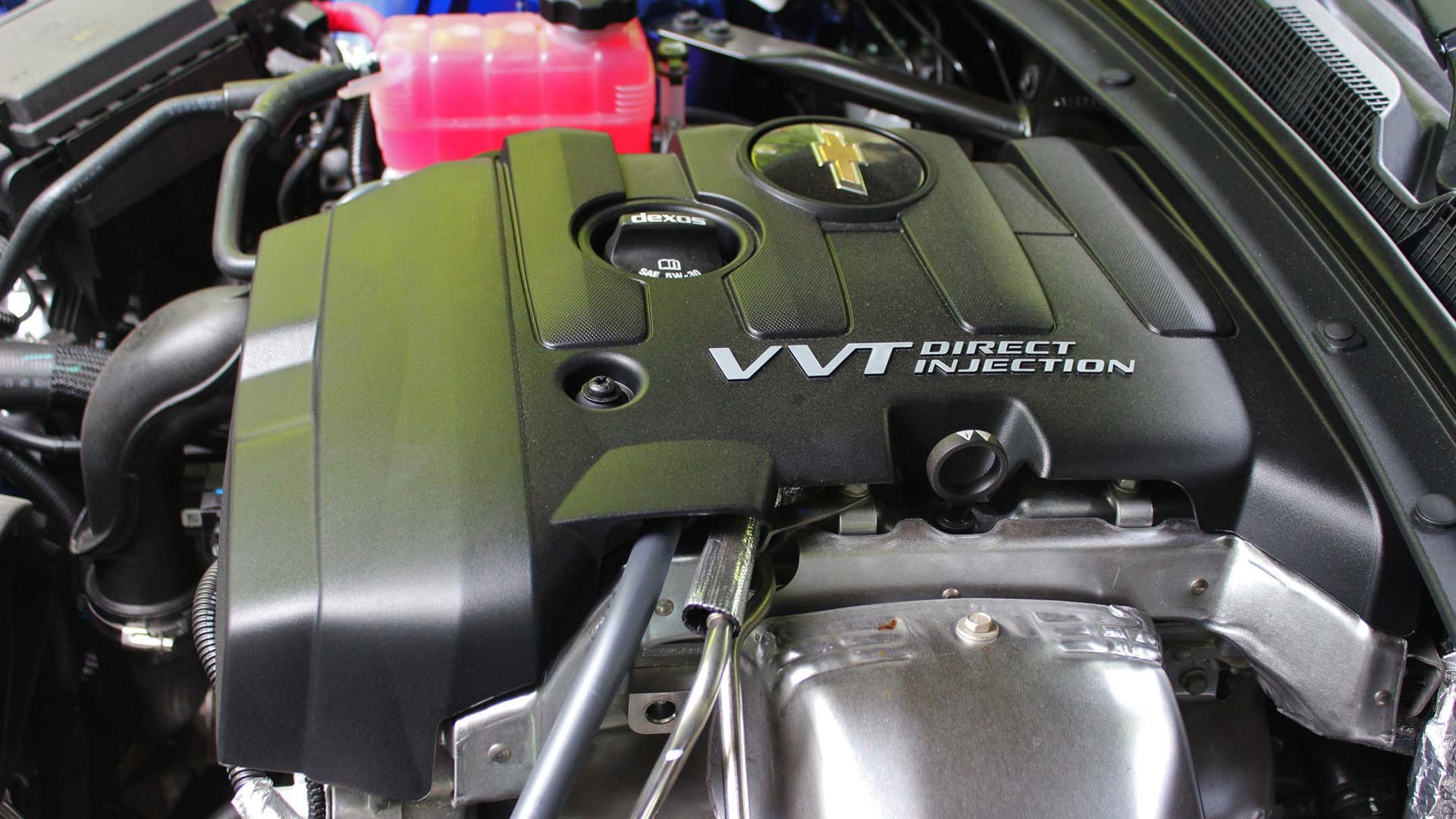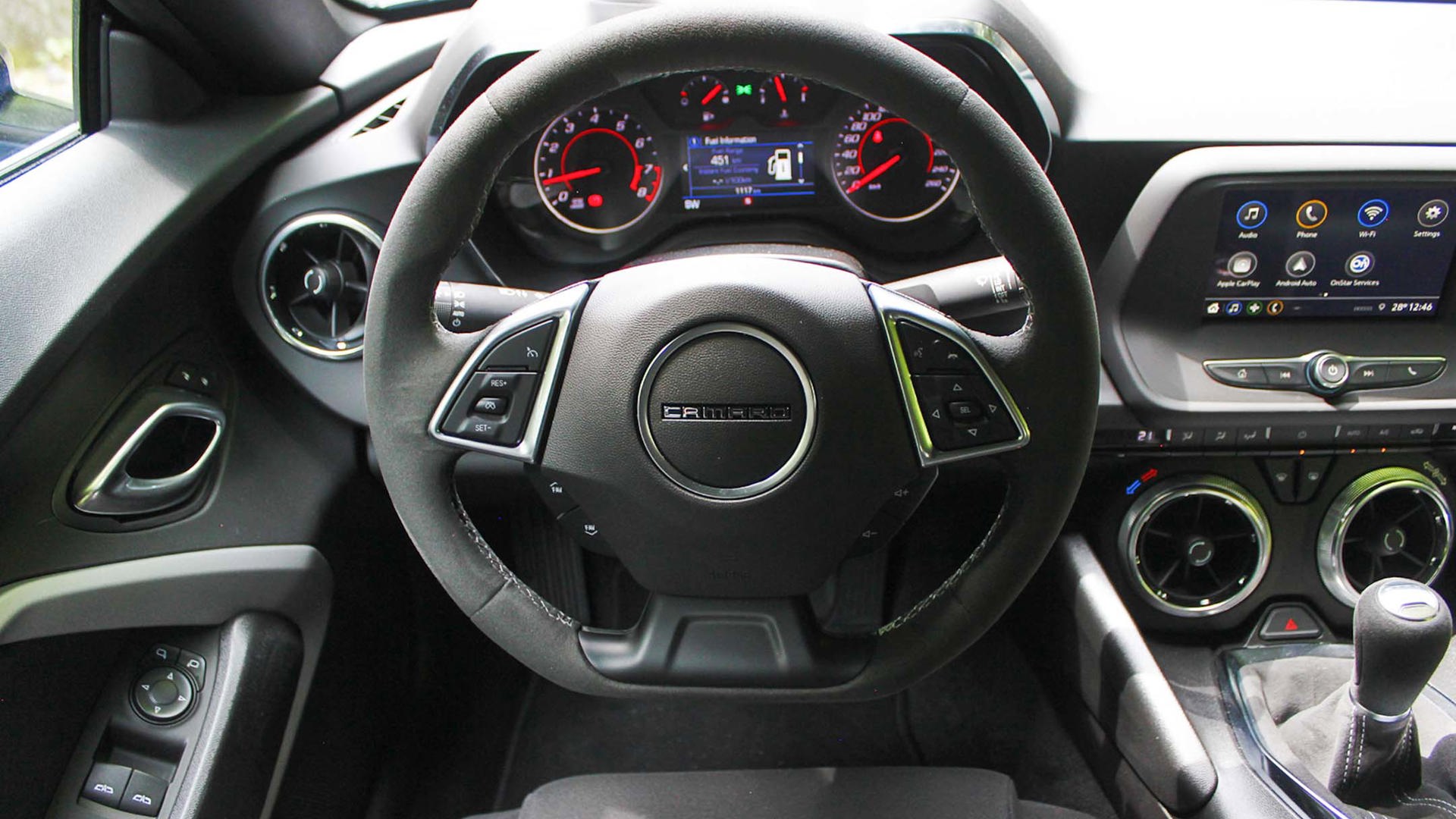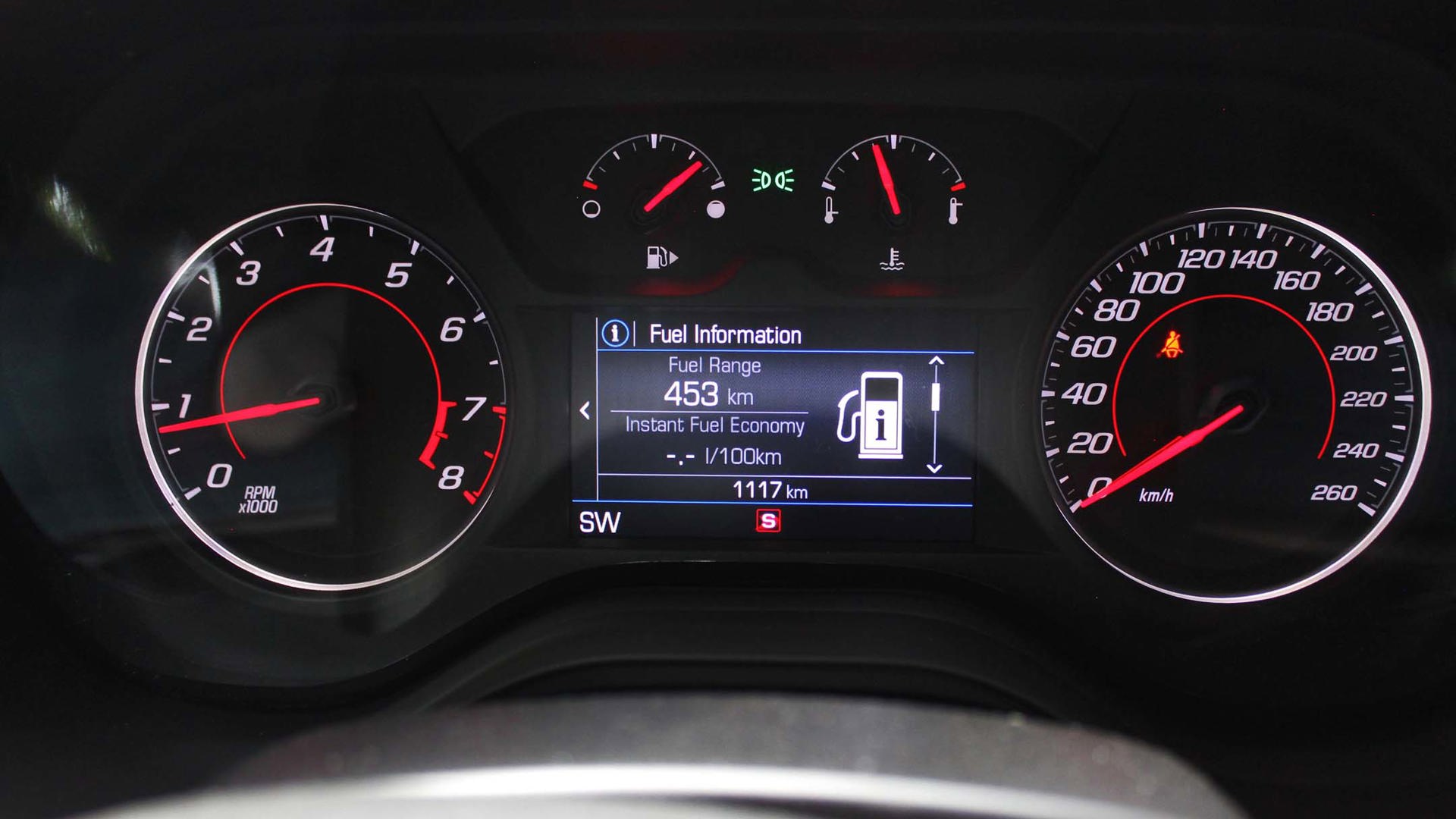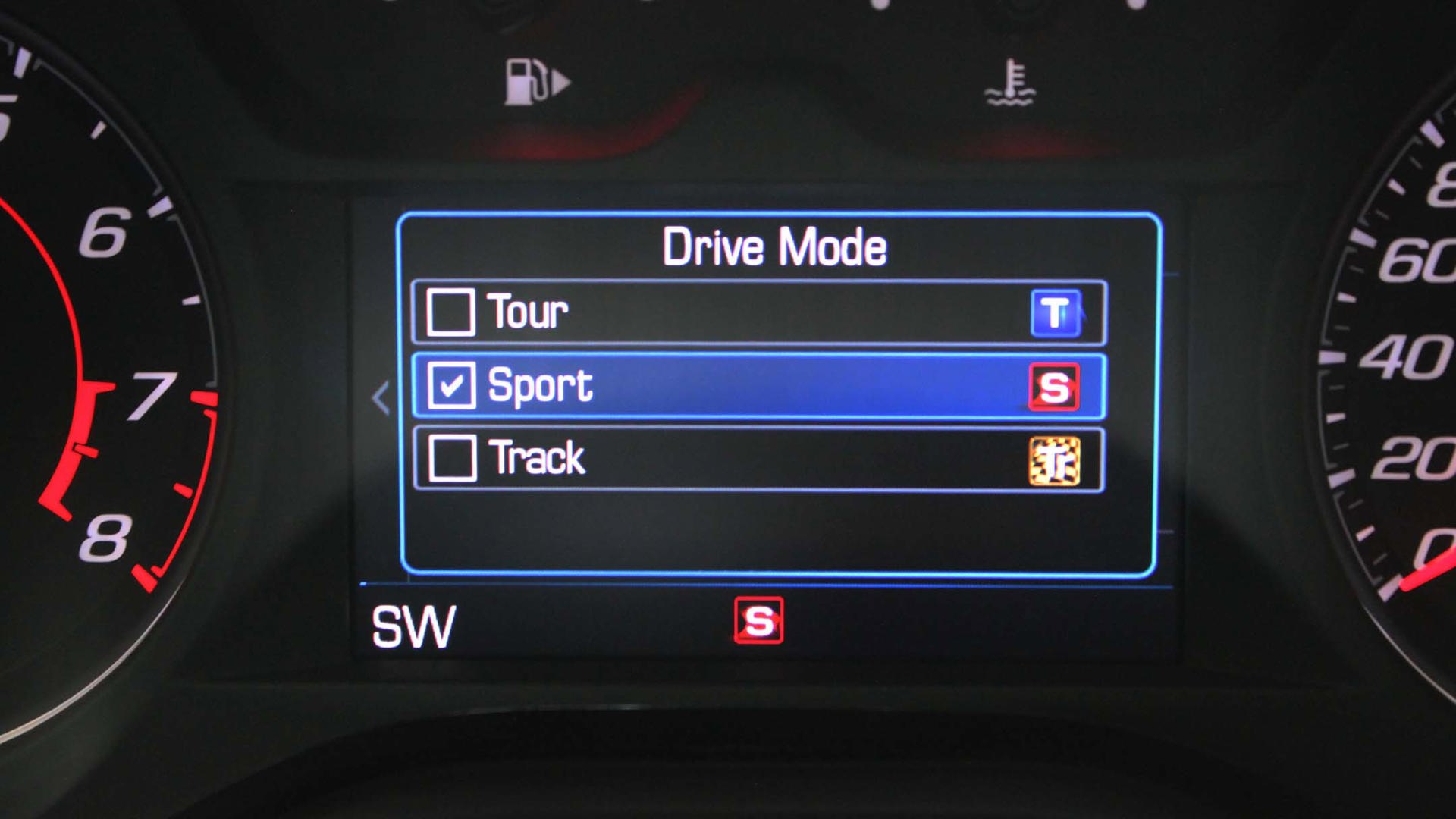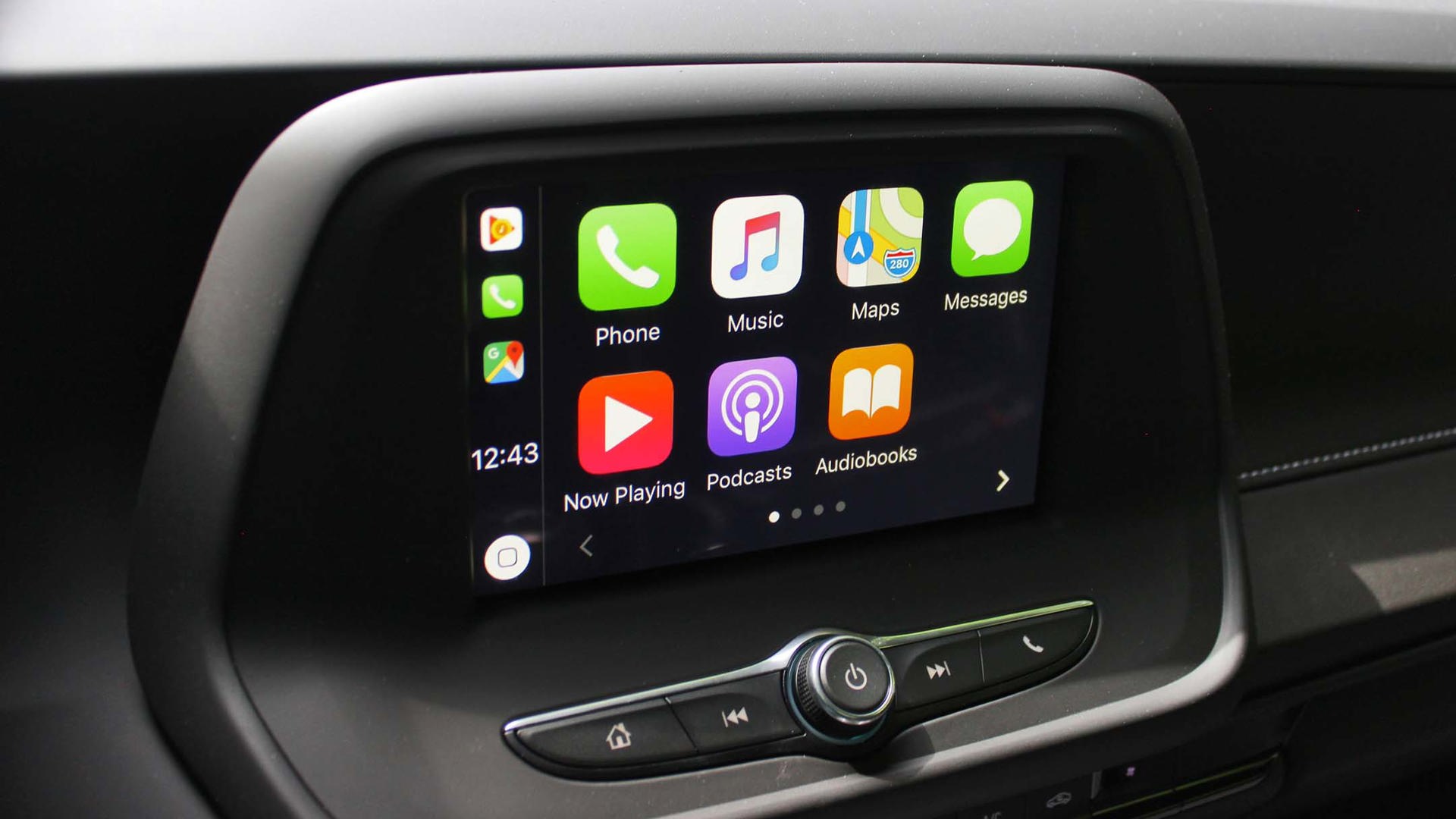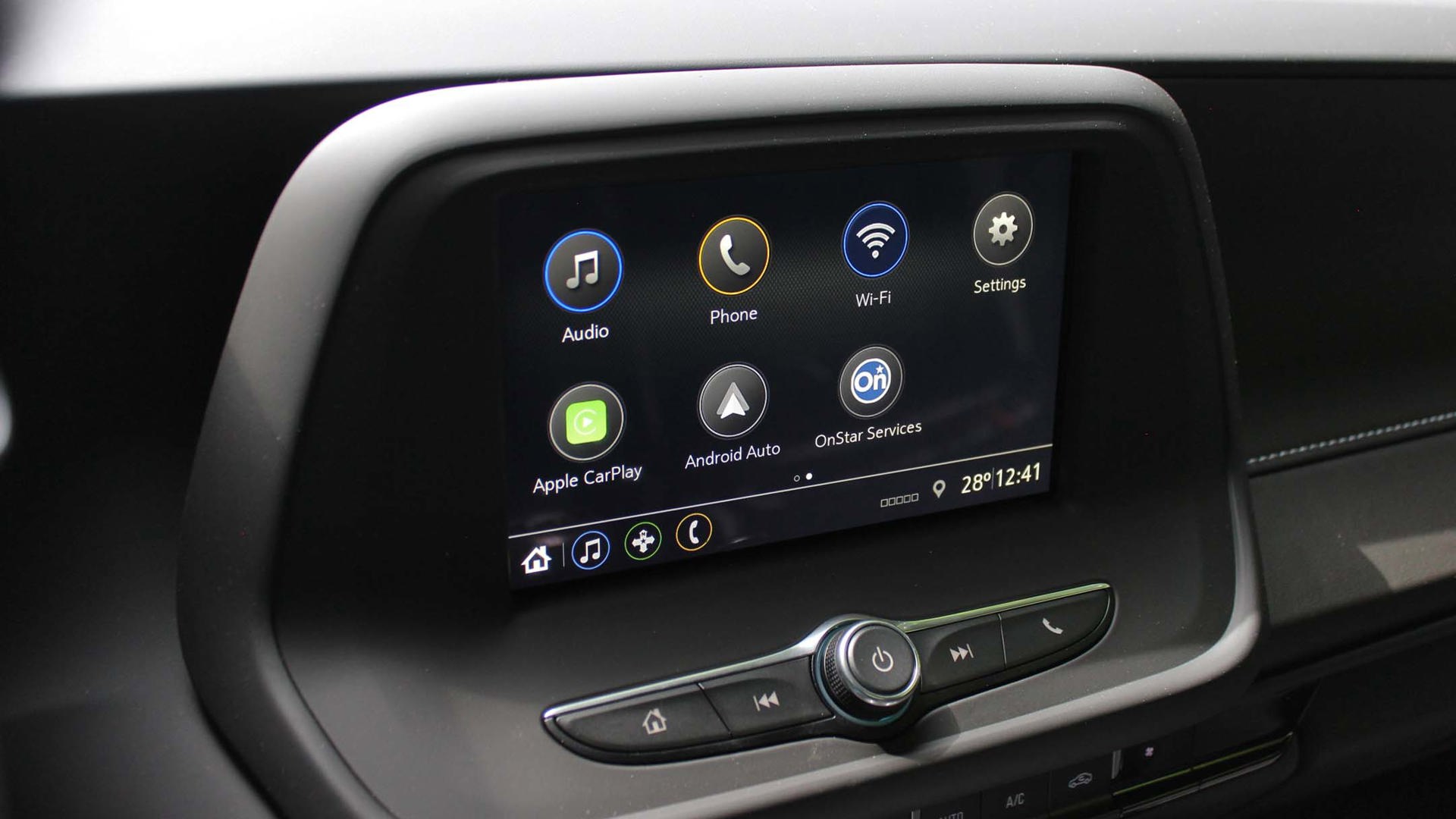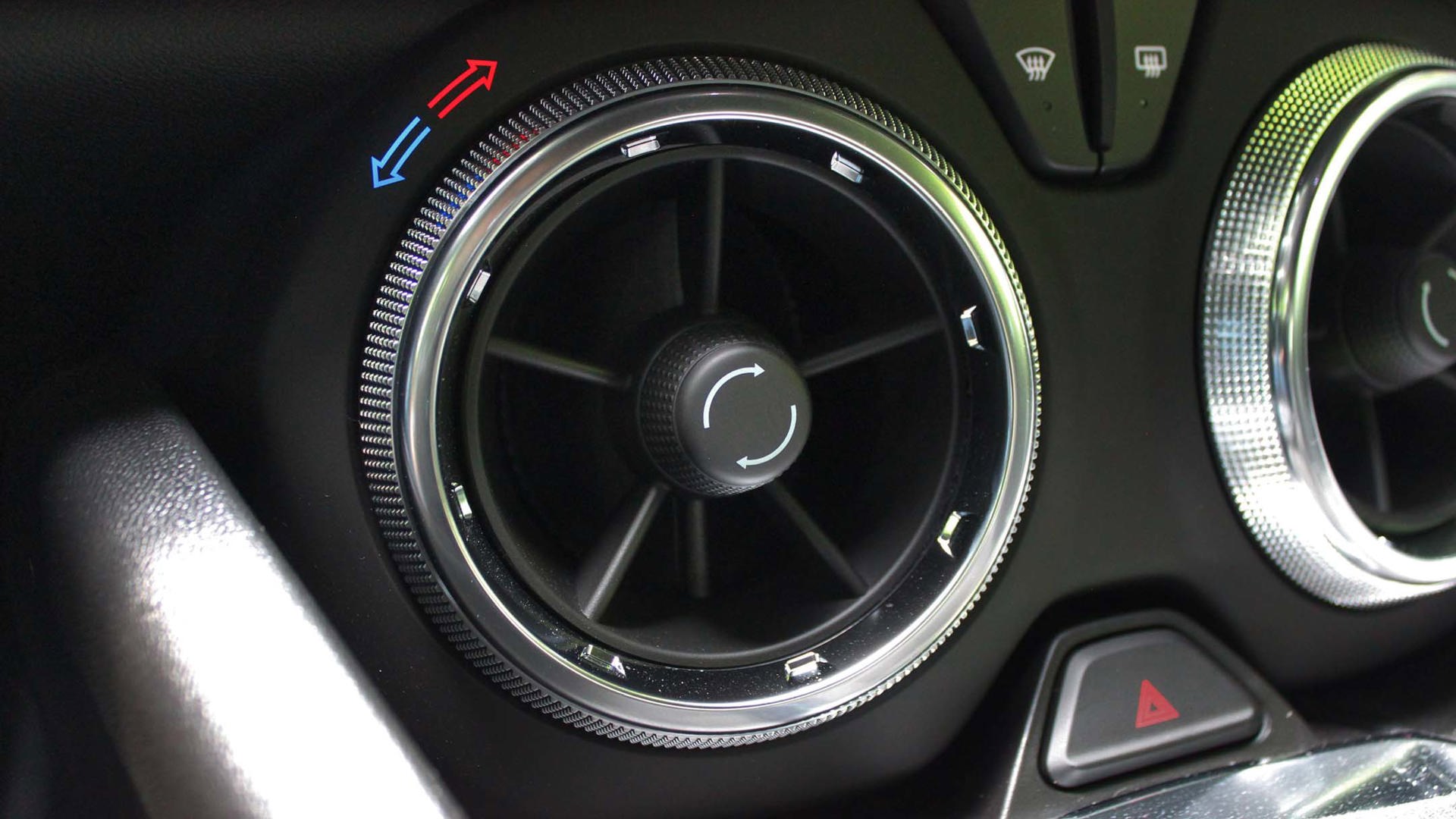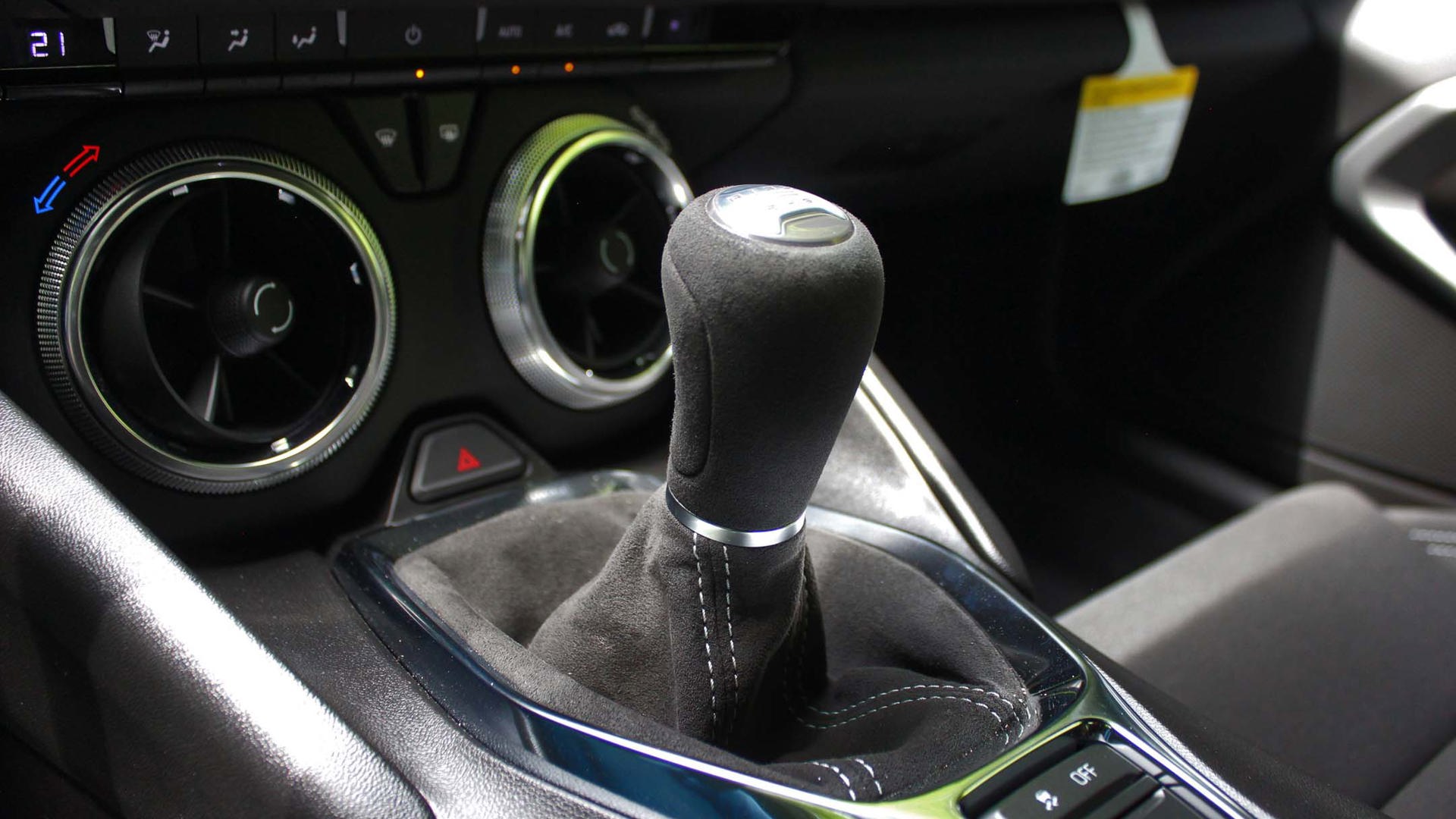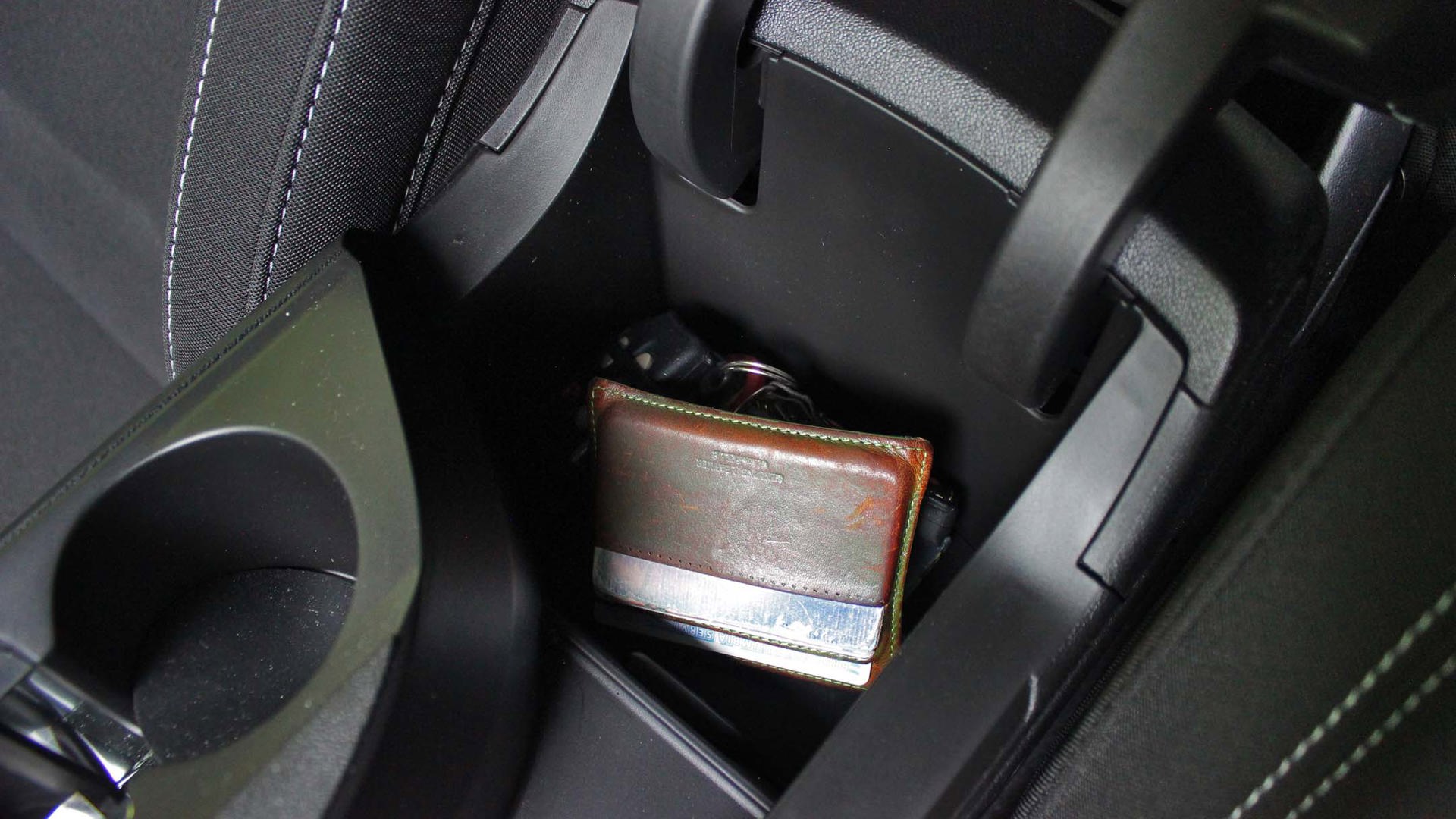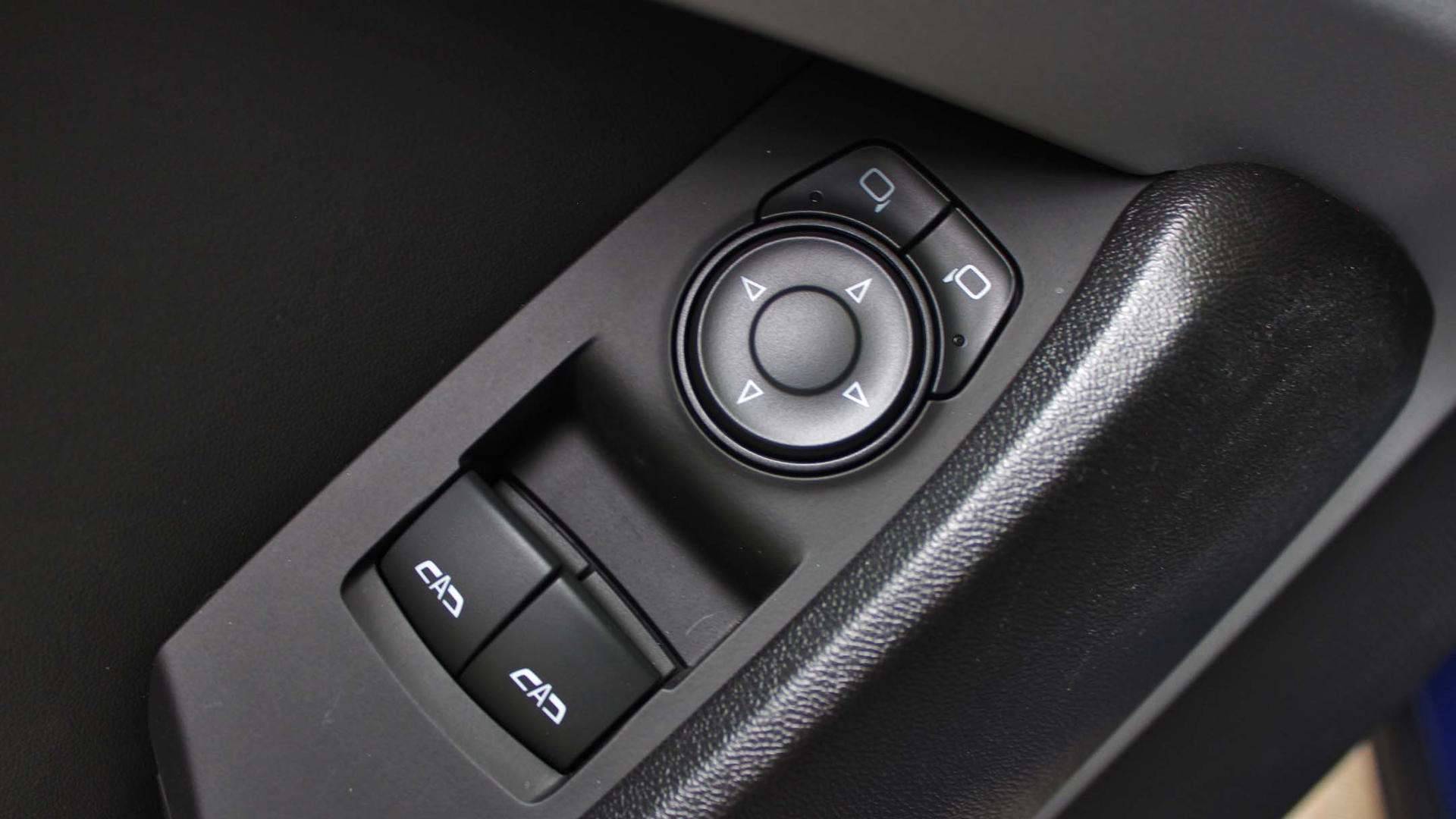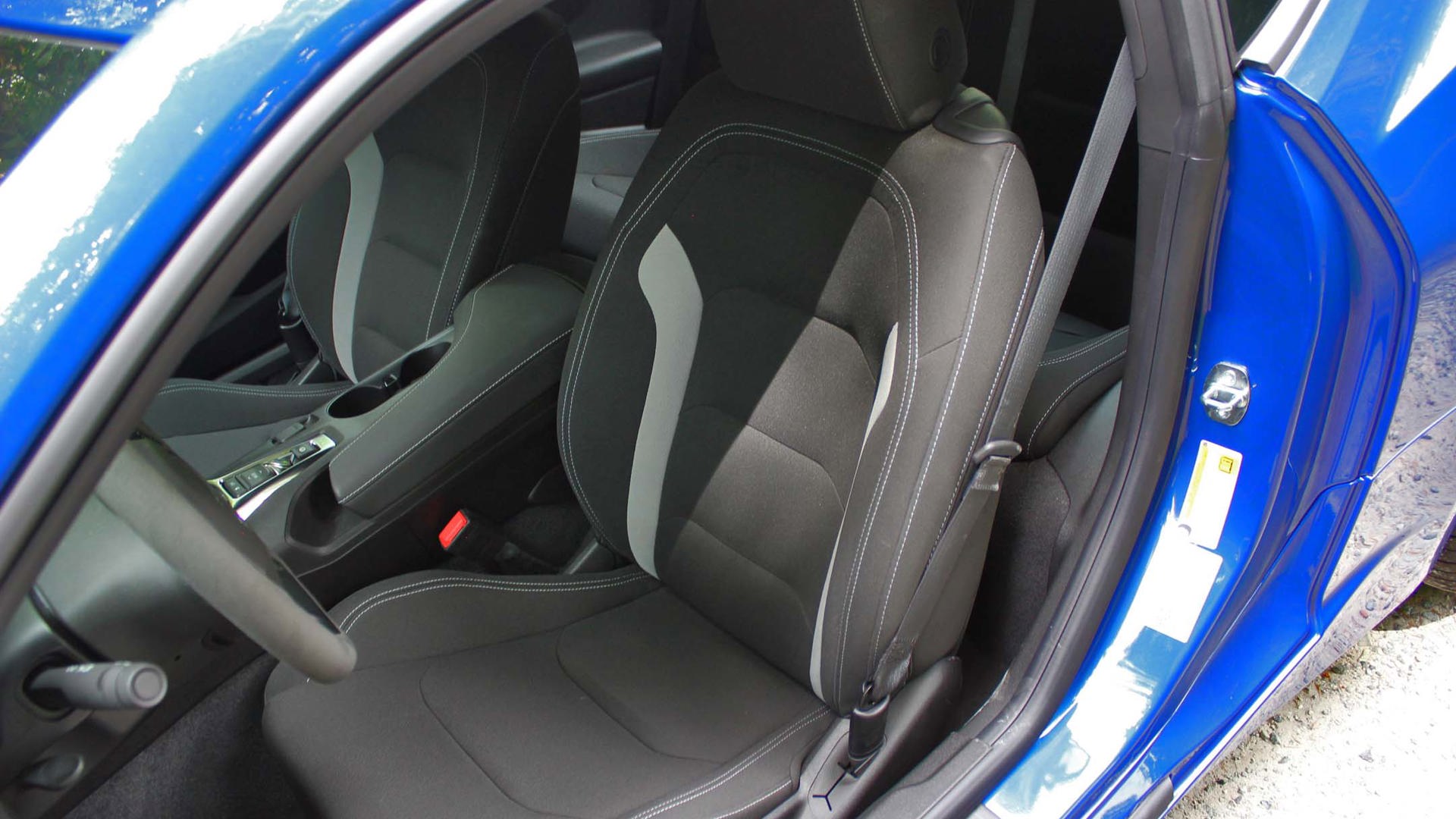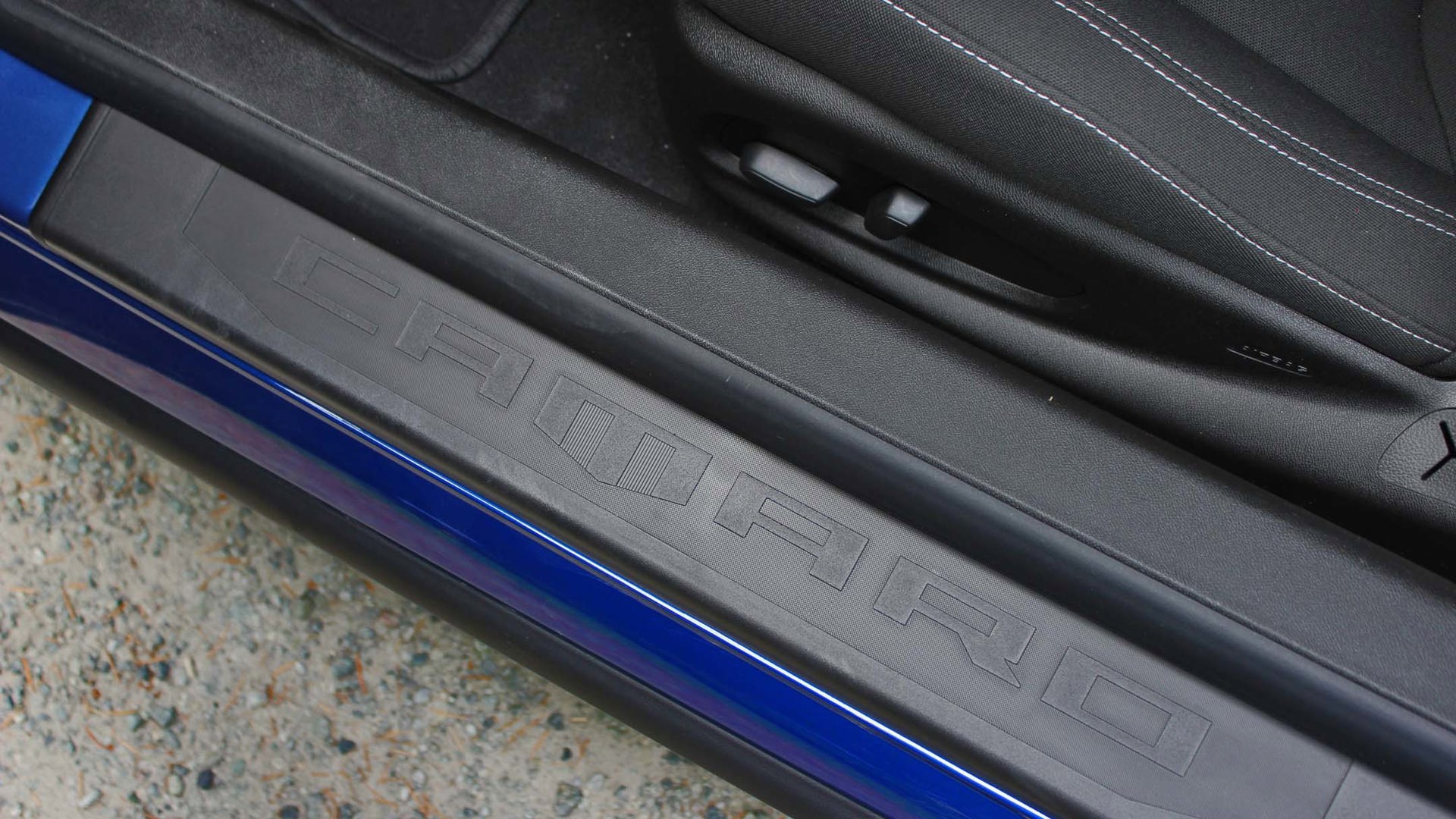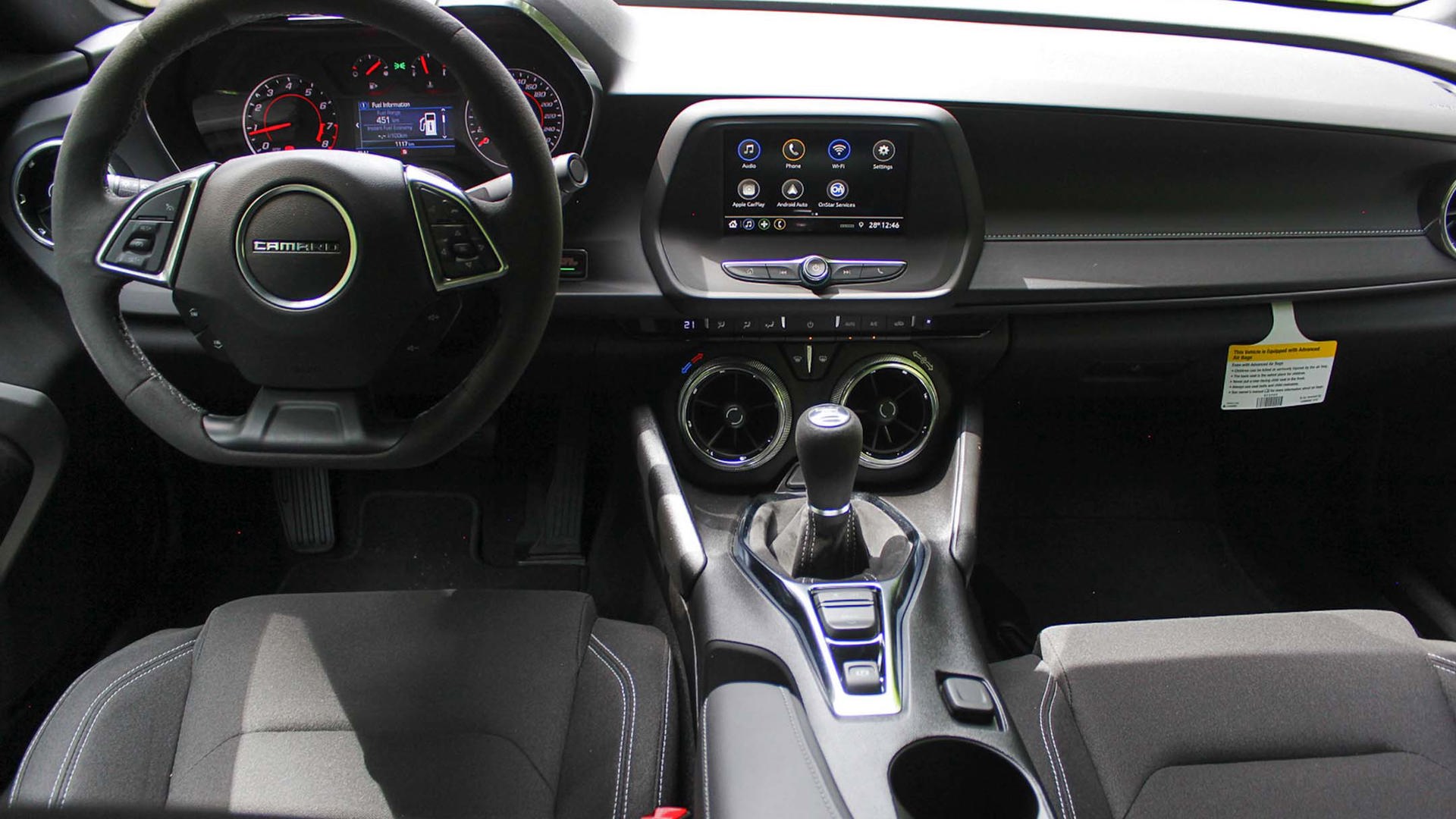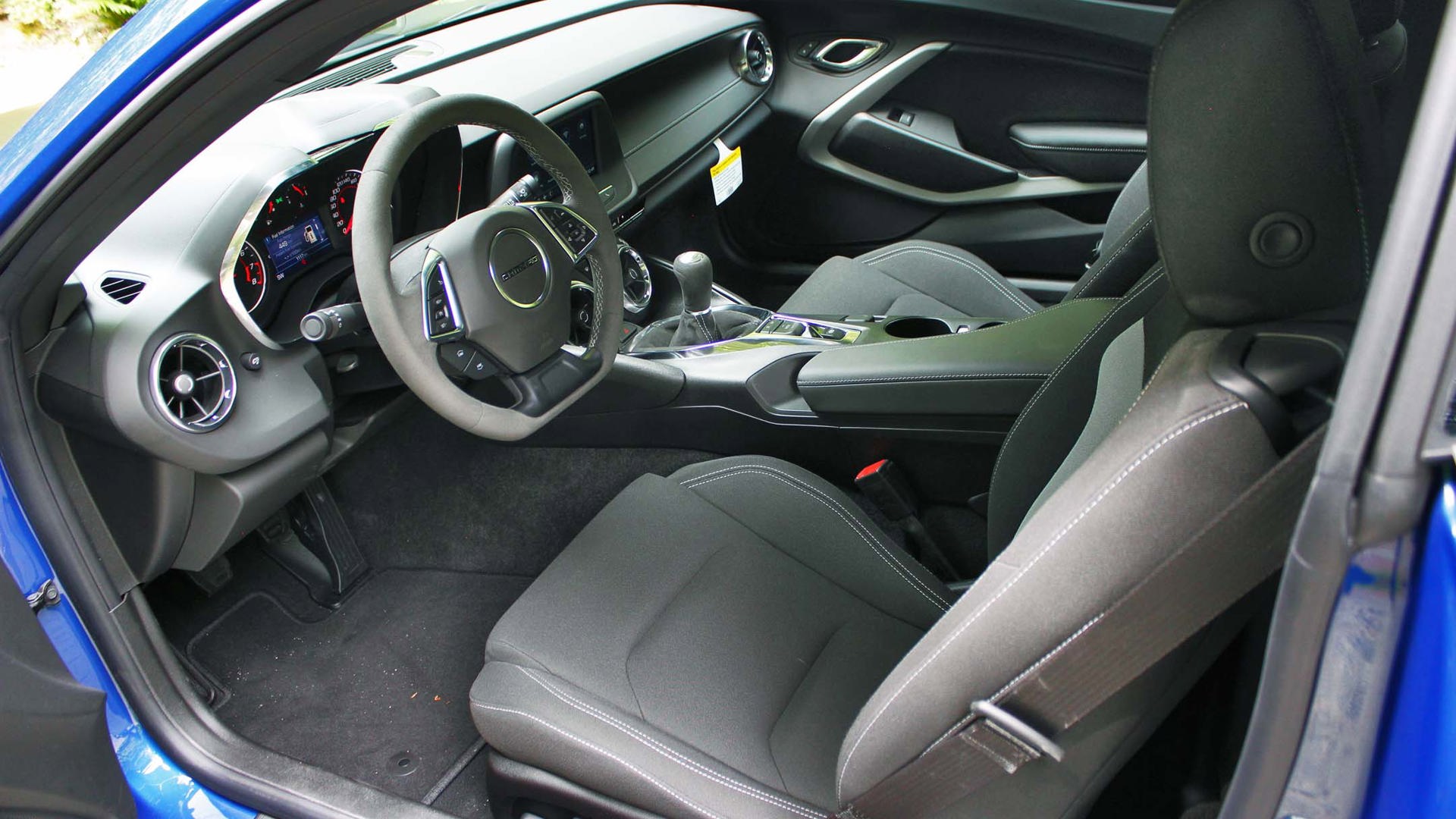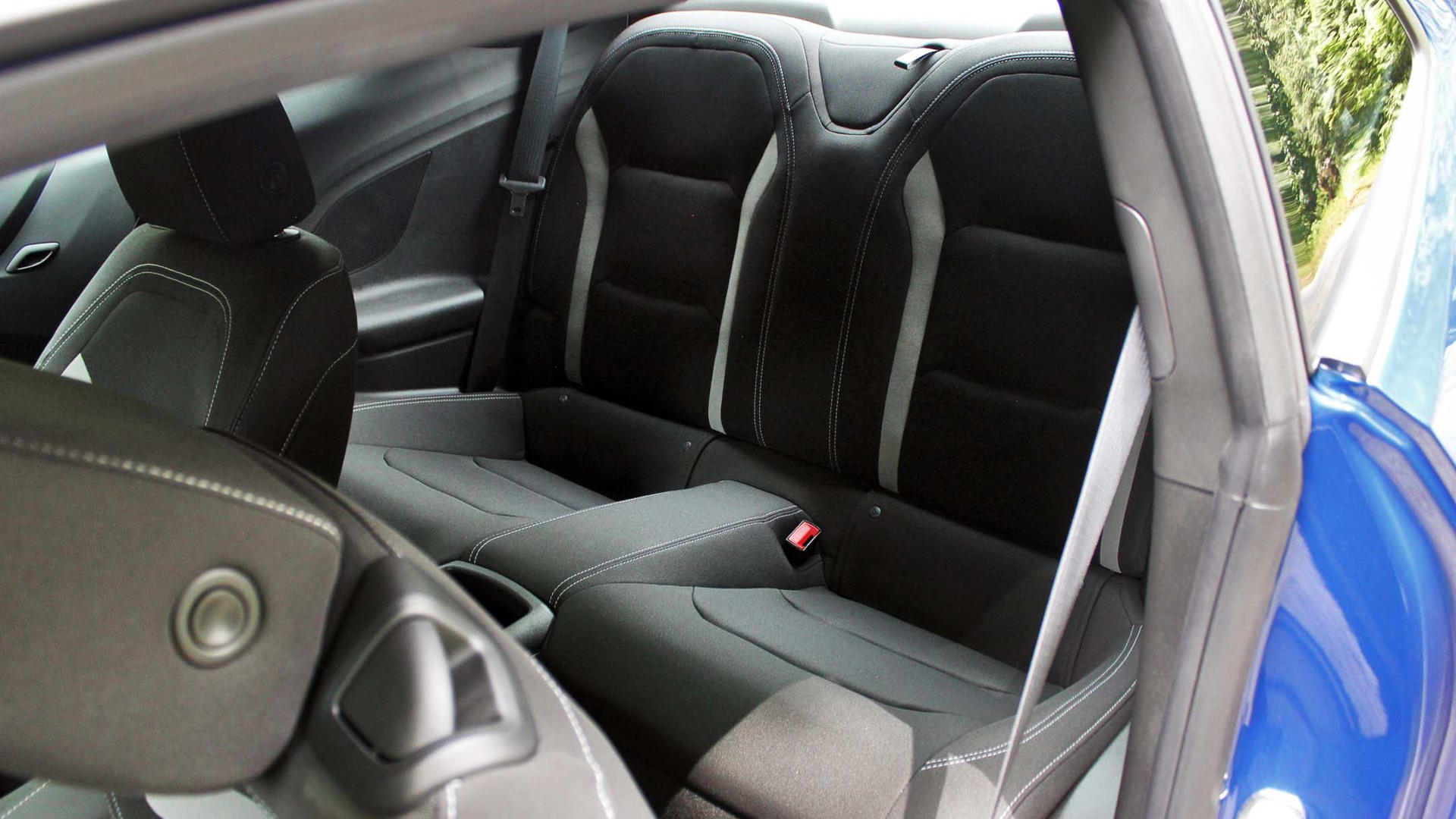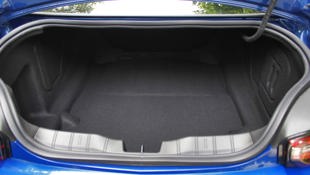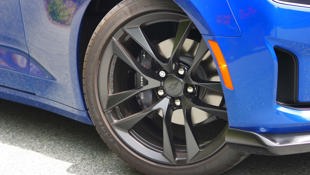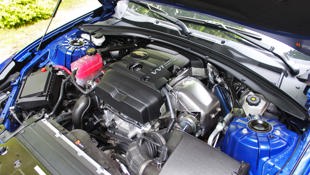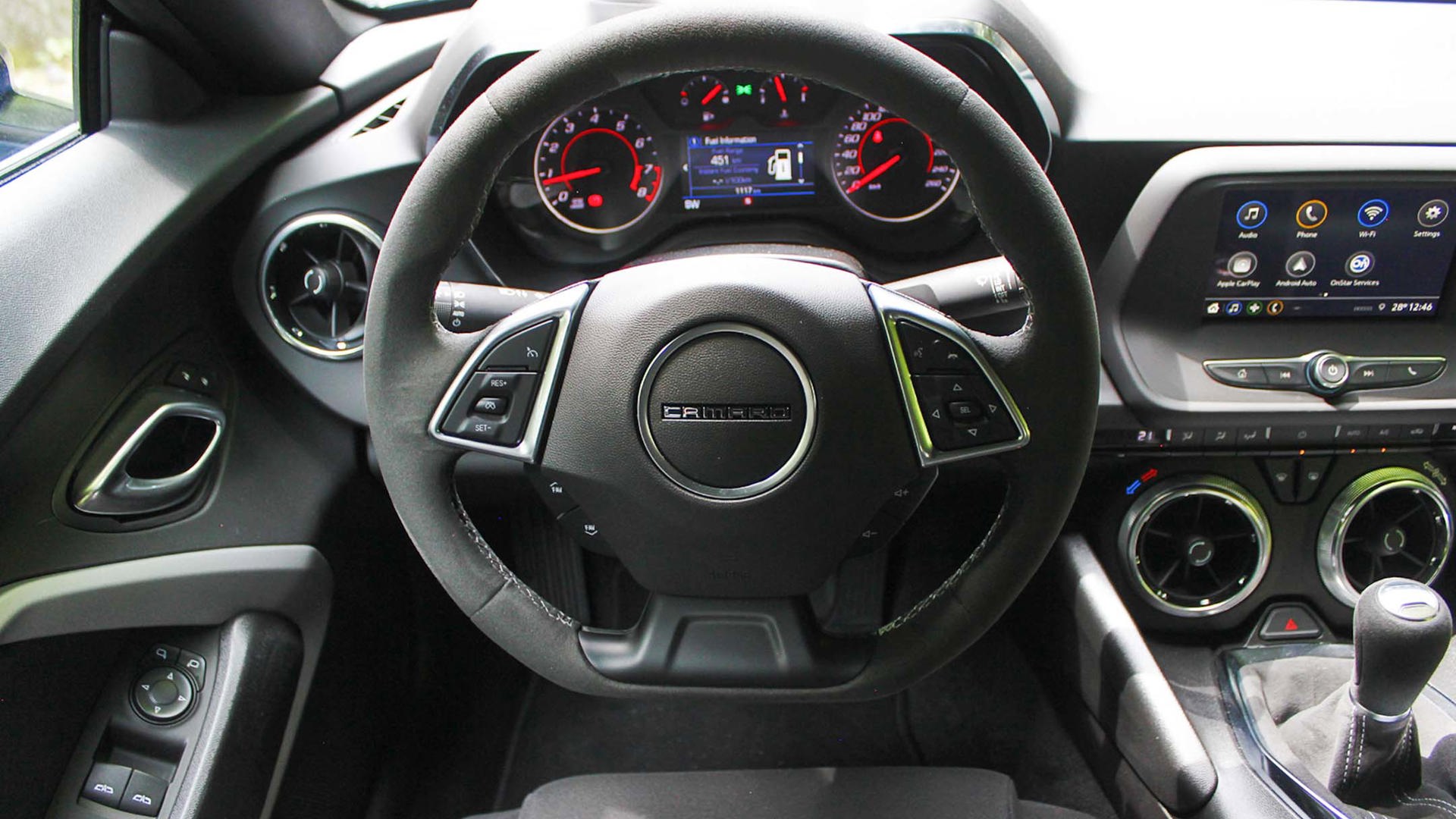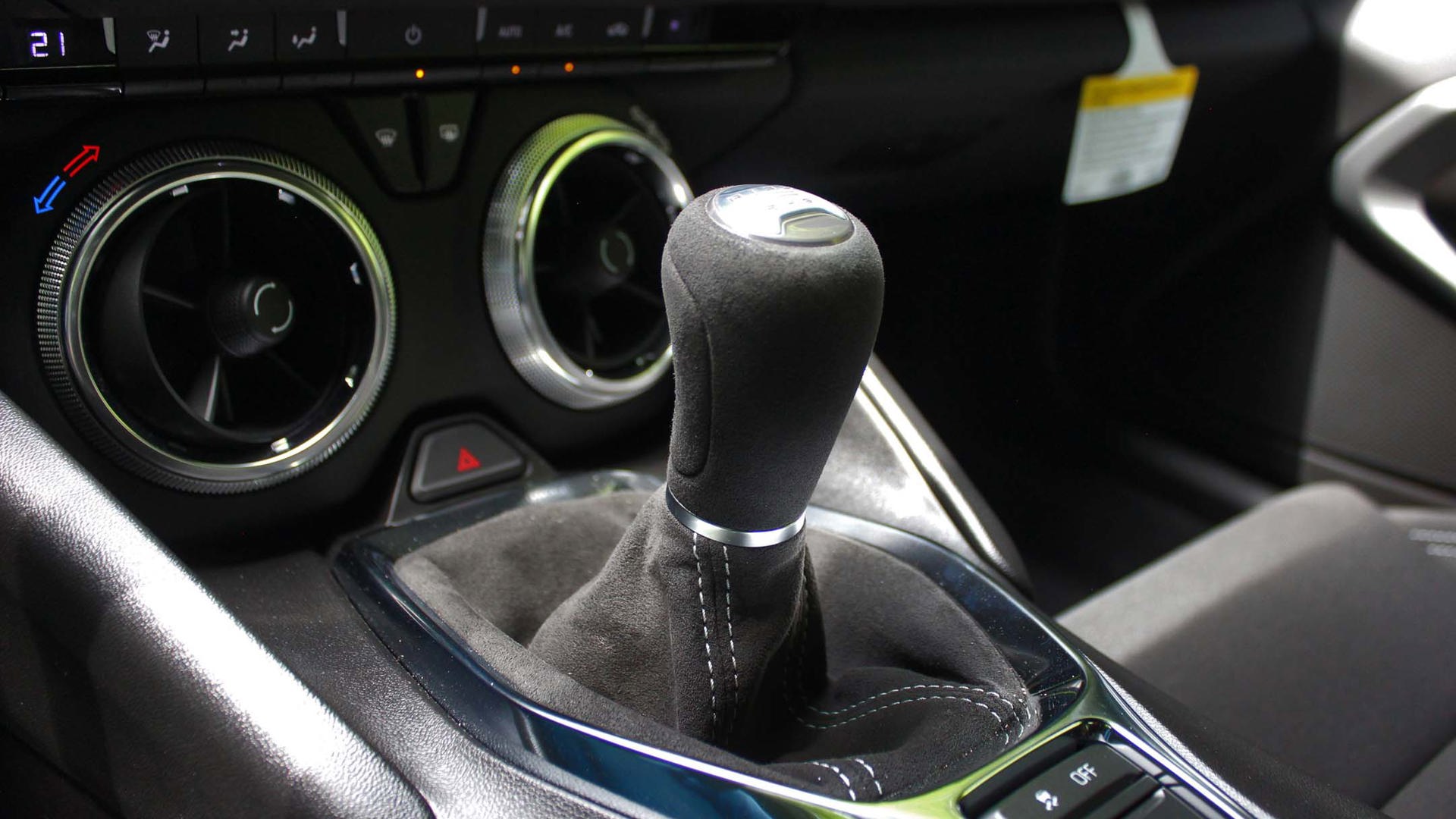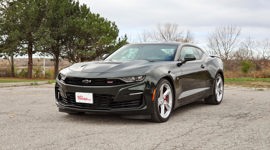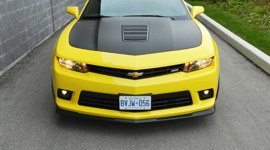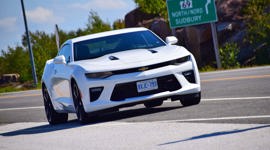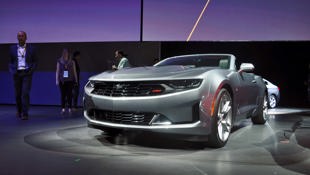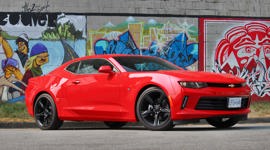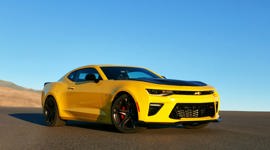 AutoTrader SCORE
AutoTrader SCORE
-
STYLING9/10
-
Safety6/10
-
PRACTICALITY6/10
-
USER-FRIENDLINESS8/10
-
FEATURES8/10
-
POWER8/10
-
COMFORT6/10
-
DRIVING FEEL8/10
-
FUEL ECONOMY7/10
-
VALUE8/10
This is a Chevrolet Camaro. It’s the latest in a long line of much-loved and lauded V8-powered pony cars that date back to the 1960s, when horsepower reigned supreme, there was no replacement for displacement, and if a manufacturer didn’t offer rally stripes, they may as well not bother.
Muscle cars should be loud-looking, loud-sounding, and dramatic.
But this 2019 Camaro Coupe doesn’t really have any of that. No rally stripes (but you can add them), no V8, and, if we’re honest, a pretty paltry displacement figure.
So then, can this four-cylinder turbo Camaro still walk the walk?
Styling: 9/10
While my car doesn’t have the $595 rally stripe option, it does have a matte satin black hood which is also somewhat muscle-car-like, just in a slightly more rat-roddy way. The spoiler and wheels are also blacked out for a nice look that adds a welcome degree of toughness to the proceedings, and it’s likely an option I’d check on my order sheet; the feeling of that satin spoiler against my palms as I closed the trunk was something I never grew tired of. The hood, plus dark Riverside Blue paint job do their part to make the ultra-slim HID headlights shine even brighter from underneath the cowl formed by the hood’s leading edge. It’s all part of a facelift for 2019, as are the tweaked taillights and rear bumper.
My car had a jet black interior – one of two choices for the LT trim – which is fine if you like to hide the dirt, but it’s already dark with the narrow side windows and rear window, and this takes it to another level. At least it helps hide the steering wheel hub a little because the one in the Camaro just makes the whole wheel look big and awkward; and since the steering wheel is a pretty big detail on the dash, it kind of makes the whole dash look awkward. There are ways of designing a wheel with all the buttons and airbags you need, without having it look like it belongs in a minivan. Look to the Ford Mustang – the number-one competitor for the Camaro – to see what I mean.
Since it is so dark in here, the silver bezels around the vents (and other silver-coloured trim) have a lot of heavy lifting to do because it’s all on them to brighten things up, which they do nicely.
Features: 8.5/10
Muscle car or no, in this day and age, buyers are looking for interior goodies. With the Camaro in 1LT trim, you get a 7-inch touchscreen with Chevrolet Infotainment 3 interface, six-speaker audio, 4G LTE Wi-Fi hotspot, and Apple CarPlay and Android Auto. The Apple CarPlay integration worked rather well, with no problems even from the always-troublesome Google Play Music.
The eight-way power adjustable driver’s seat is also a nice touch, and most will likely find a comfortable driving position. You’ll want one that gives you that great muscle car experience: long hood stretching out ahead of you, seen through a slit of a windshield.
User Friendliness: 8.5/10
Chevrolet’s latest infotainment system is a good one: gone are the muddy graphics of old, replaced by sleeker fonts and more vibrant colours. The touchscreen itself is nice and responsive, and the way various commands are laid out on the screen is intuitive. What I don’t love, however, is how if you’re using Apple CarPlay, you lose some information – outside temperature, for example – that isn’t replicated anywhere else, such as between the gauges. All you have to do is hit the “home” button to back out of CarPlay, but there could be slightly better integration here.
For those of you who haven’t quite gotten comfortable using a digital touchscreen to adjust your climate – a group I’m part of – rest assured that in the Camaro, you don’t have to. Instead, all you have to do is twist the bezel on the centre-left vent, and your temperature level responds in kind. It has a notched action, too, so you can more finely tune your temp. Bit tough to figure out at first, but once you do, it makes perfect sense.
Comfort: 6.5/10
So while the way you manipulate the climate control system works well, the way the system itself responds is a bit of a different ball of wax. On a particularly hot day in Vancouver – about 28 degrees – I found myself constantly fiddling with that bezel. No matter what I tried, it seems the temp was either too high or too low; I found myself almost sweating with the temp set to 22 degrees, then freezing once I dropped it to 21. It didn’t help that the way the vents are aligned and the snugness of the cabin make it tough to stop the air flow from hitting you as the driver, no matter how much you twist and turn the vents. It was weird and frustrating, making that one drive not unbearable, but highly annoying.
Which is too bad because otherwise, the cabin is a nice place to be, once you get over the pillbox-style greenhouse. The seats are well-padded and supportive – though the fabric in which they’re covered is cheap-feeling. The seating position is good, and while it’s undeniably snug, there’s enough room to adjust your limbs over longer journeys.
The seat fabric may not be the best, but other details in my tester – including the steering wheel and shift knob – were covered in Alcantara suede thanks to its having the 1LE Track Performance Package. Which is nice, except for the way the stitching on the shift knob chafed my palm a little through extended use, even when I slipped on a pair of leather driving gloves.
Practicality: 6.5/10
This being a two-door muscle car, few are going to expect much in terms of practicality; I mean, there are rear seats, but they’re better reserved for a golf bag, maybe two. One thing it does have is a reasonably sized trunk. Even though the specs say it has less space back there than the Ford Mustang, its trunk opening is wide enough to help compensate for the lower capacity.
I’m less impressed with the in-car storage; the centre console bin is quite small, and it’s also where you plug in your USB cables. They’re awkward to hook up in the first place, and once in, the cables block access to the too-small bin.
Power: 8/10
It’s here that we can really see if the 2.0L turbo-four does justice to the Camaro’s pony/muscle car digs. It’s never going to feel anything close to a V8, of course, but the real question is whether or not it can steal some of the thunder from the V6 that’s also available.
Power is rated at 275 hp and 295 lb-ft of torque, figures that are both down on Mustangs equipped with the 2.3L EcoBoost engine. Indeed, you have to move to the V6 to get similar horsepower to that Mustang, and even then, the Ford still beats it on the dyno.
But what of the car we have here? Well, power figures notwithstanding, the Camaro’s six-speed manual is fun to row as you come off the line; the clutch take-up predictable and responsive. (An eight-speed auto is available, but you lose the 1LE Track Performance Package if you go that route.) I found a little bit of stickiness on the throw between second and third, but otherwise, the manual is up to the task of an enthusiastic bout of acceleration. But instead of the chest punch the V8 delivers, it’s more the sensation of a firm tugging on your coattails.
Since peak torque comes between 3,000–4,500 rpm, meanwhile, there’s actually some really good in-gear acceleration; you’ll get from 80 to 100 km/h in about three seconds, for example, which is plenty of push for everyday driving.
It’s just that it does it with so little drama, so little emotion. I understand that a four-banger is never going to yell like a V8, but couldn’t they give us a little more in that department here? I’m not usually one to ask for this, but a little boosting of the engine note through the speakers would go a long way to make the Camaro at least sound somewhat close to how it looks. Or maybe fit the dual-mode exhaust the V6 gets. Not something you’d ask for in most cars, but in muscle cars, the situation is changed a little. Muscle cars should be loud-looking, loud-sounding, and dramatic. The drive of this particular Camaro isn’t quite all that.
Driving Feel: 8/10
There are three drive modes to choose from that change the steering weight and throttle response: Tour, Sport, and Track. Leave it in Tour, and the Camaro behaves like any turbo-equipped sports car would, that is to say zippy but relaxed, and easy on the occupants. Sport ratchets things up a notch; while Track relaxes the electronic aids. But don’t think you’ll be drifting your way home – the Goodyear Eagle F1 rubber that comes as part of the track package is hard for the engine to unseat, especially in the dry. Indeed, it contributes to this particular Camaro being more about taut passages through b-roads than hairy drifts. The same goes for the chassis adjustments the track pack brings, which include a track-tuned suspension.
It also includes a Brembo brake upgrade, but I wouldn’t say that these are the grabbiest brakes in the biz, upgrade or no. I found myself having to apply more brake pressure than I’d thought necessary on many occasions; it’s not a brake fade issue, either – it’s just that the pedal travel and brake response aren’t quite in tune with what I’d expect of the upgraded brakes.
It’s a similar story with the steering, which is up to the task, but not immediately intuitive. It’s responsive to be sure; even with that long hood in front of you, turn-in is quick, the big Camaro easy to place through bends – until it’s not. You see, while turn-in response is good, the off-centre dead zone is a little tough to define, making it a little challenging to keep the Camaro tracking true through long sweepers. Once I learned to work with that dead zone, however, I found it to be a great steerer that had me coming back for more.
Safety: 6.5/10
The LT 1LE is pretty basic in this regard; you’ve got anti-lock brakes (ABS), traction control (TCS), stability control (STM), a rear-view camera and that’s about it; no adaptive cruise or lane-keep assist, no forward collision warning or rear cross-traffic alert. That last one I really miss as it’s tough to see out of the Camaro at the best of times, let alone when navigating the tight confines of a mall parking lot.
Fuel Economy: 7/10
Of course, the switch to four-cylinder power means savings in fuel, and while I know the 12.6 L/100 km I saw during my test is likely better than anything you’d get from a V8, it’s not like I’d be buying a four-cylinder Camaro for the fuel savings it presents.
Value: 8.5/10
Rather, I’d more likely elect to go with the four-cylinder because I’d want to get into a cool, two-door, rear-wheel-drive sports car with a legendary name without having to break the bank – with a sub-$30,000 base MSRP, I’d have that. Adding that track package takes it closer to 35 grand, however, but even that is not too bad considering the content within. The question is: does a four-cylinder Camaro need a performance package, or is your money better spent on upgrading to a convertible version? It costs around the same, and the four-banger may better suit the convertible’s more weekend-cruiser mission.
Conclusion
So, is this Camaro worthy of the name? In most cases, I would say it is: it looks the part, it’s rear-wheel-driven, and it has a manual transmission. Plus, it’s not expensive, and inexpensive performance is what muscle cars and pony cars are all about.
It’s just that engine. As I write this, a muscle car with that great V8 burble is driving by and I just have so much trouble wrapping my mind around a four-cylinder muscle car, especially when said muscle car’s four-banger makes less power than its biggest competition. I recently tested the Blazer RS with the same V6 engine as the Camaro and I think that if I wanted an affordable muscle car, that’s the way I’d go: it starts almost at the same price, but with more power (and, it has to be said, slightly less torque). It felt good in the Blazer; I can only imagine what it’d feel like under the hood of the Camaro.
| Engine Displacement | 2.0L |
|---|---|
| Engine Cylinders | I4 |
| Peak Horsepower | 295 hp @ 5,600 rpm |
| Peak Torque | 270 lb-ft @ 3,000–4,500 rpm |
| Fuel Economy | 10.8/7.7/9.4 L/100 km cty/hwy/cmb |
| Cargo Space | 258 L |
| Model Tested | 2019 Chevrolet Camaro 1LT Coupe |
| Base Price | $29,845 |
| A/C Tax | $100 |
| Destination Fee | $1,750 |
| Price as Tested | $37,510 |
|
Optional Equipment
$5,815 – Riverside Blue Metallic Paint $495; 1LE Track Performance Package (Brembo 4-piston front brakes, external engine oil cooler, extra capacity cooling system, rear differential cooler, limited slip differential, heavy-duty cooling and brake package, performance suspension, sating black front splitter, satin black hood wrap, satin black rear spoiler, 20” black forged aluminum wheels, RS badging, RS lighting, suede flat-bottom steering wheel and shift knob, jet black interior, six-speed manual transmission) $5,195; Wheel locks $125
|
|
